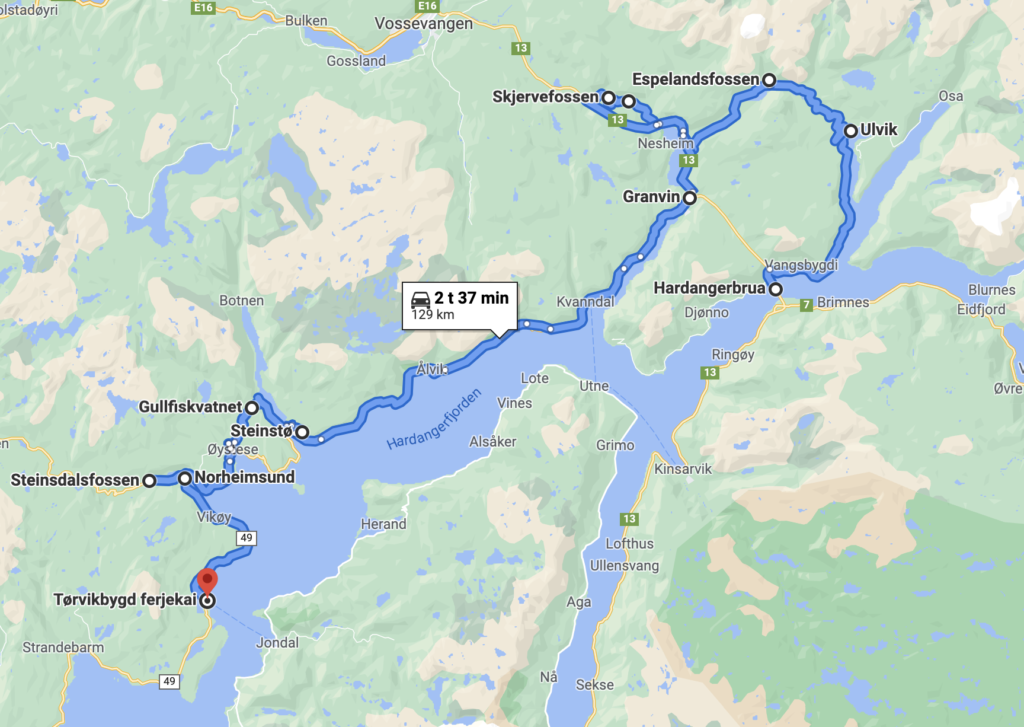
Norwegian Scenic Route-HARDANGER-part2 covers the north and south sides of Hardangerfjorden from
Granvin to Steindalsfossen –
Norheimsund to Tørviksbygd.
I will also include information about the road trip from Hardanger Bridge to Ulvik and Ulvik to Granvin along RV572.
This part is also a scenic and well-known area in Hardanger.
This part of the scenic route crosses two bridges, and takes you to idyllic fjord villages and lush hillsides, lakes, fascinating waterfalls, and a historic hotel. The road provides access to some nice and modern recreational areas with beautiful views.
Main stops:
Hardanger Bridge
Ulvik
Skjervsfossen
Granvin
Tyrvefjøra Rest Area
Steinstøberget
Fykse area
Goldfish Lake
Øystese
Steindalsfossen
Norheimsund
Vikøy
Tørvikbygd
Hardanger Bridge
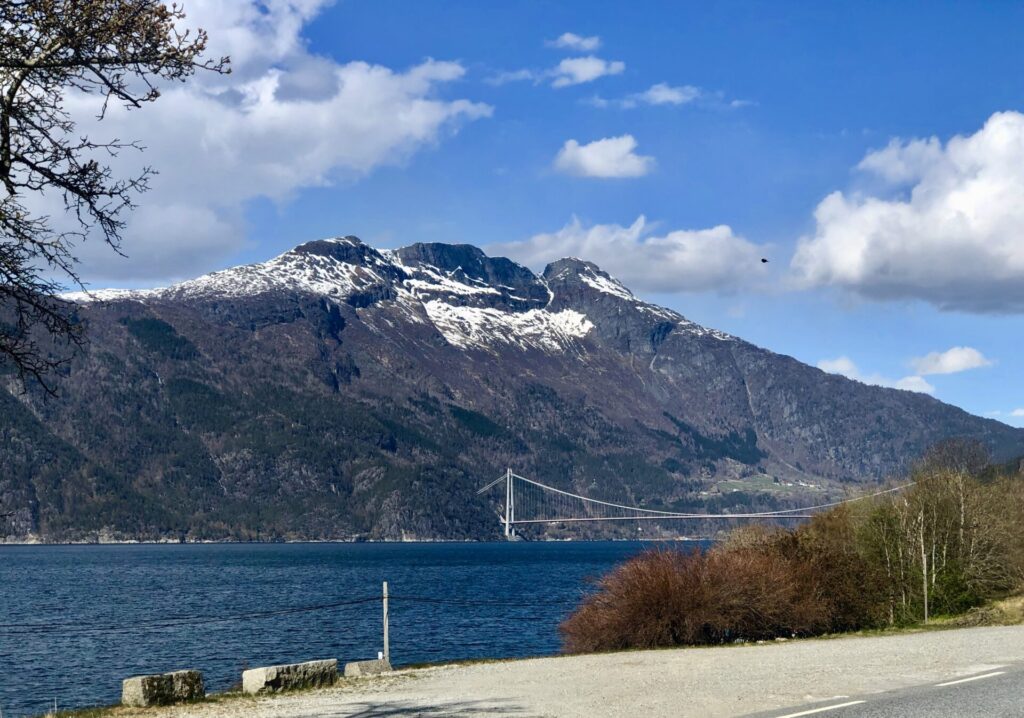
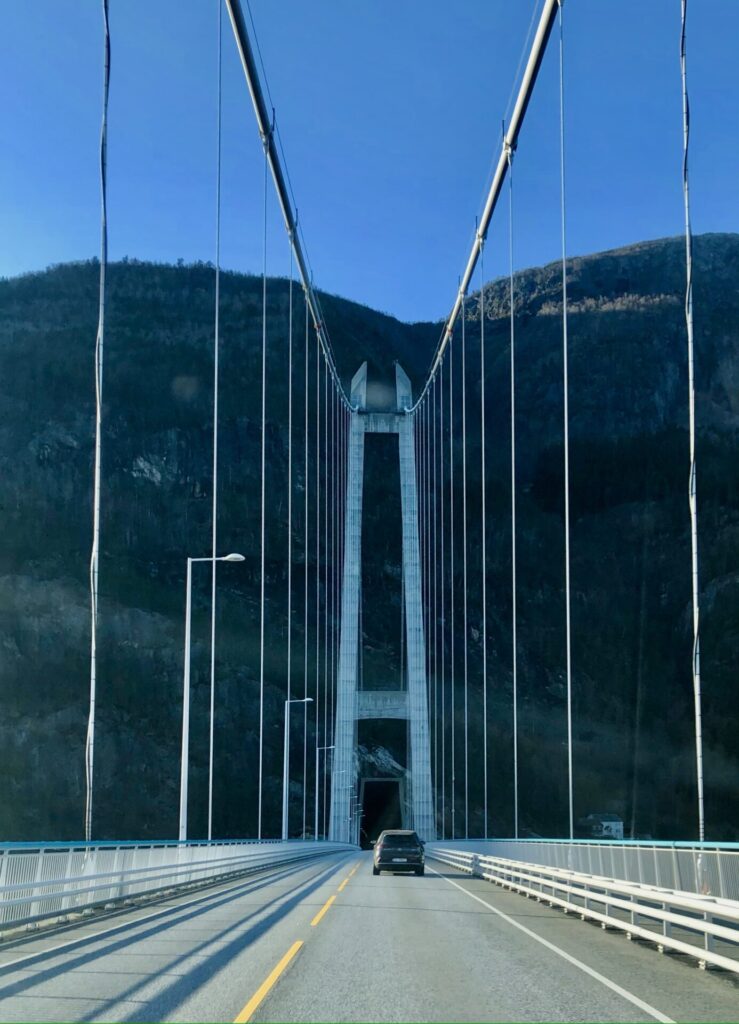
Driving north of Kinsarvik, you will soon see the Hardanger Bridge, which crosses Hardangerfjorden. This bridge replaced the ferry connection between Brurvik and Brimnes in 2013 and is among the longest suspension bridges in the world. Excellent view of the breathtaking fjord landscape from the bridge!
After crossing the bridge, you can either continue on Rv13 north through the Vallavik tunnel to Granvin or take road Fv572, which we did – it goes along the Ulvikafjorden to Ulvik.


Ulvik
In a northeastern fjord arm of Hardangerfjorden lies Ulvik, surrounded by lush hillsides and high mountains. The beautiful village is known for its fruit farms. Three apple farms that produce cider are part of the “The Fruit and Cider Route” where the farms offer tours and samples of their farmyard produce, including apple juice and cider.
There are several accommodations possibilities as well as cafes and different exhibitions of arts and crafts.
On my last trip to Ulvik at the end of April, I stayed at The Fjord Hotel. Excellent accommodation and lovely location by the sea. I woke up the next day to blue sky and calm sea and this stunning view:
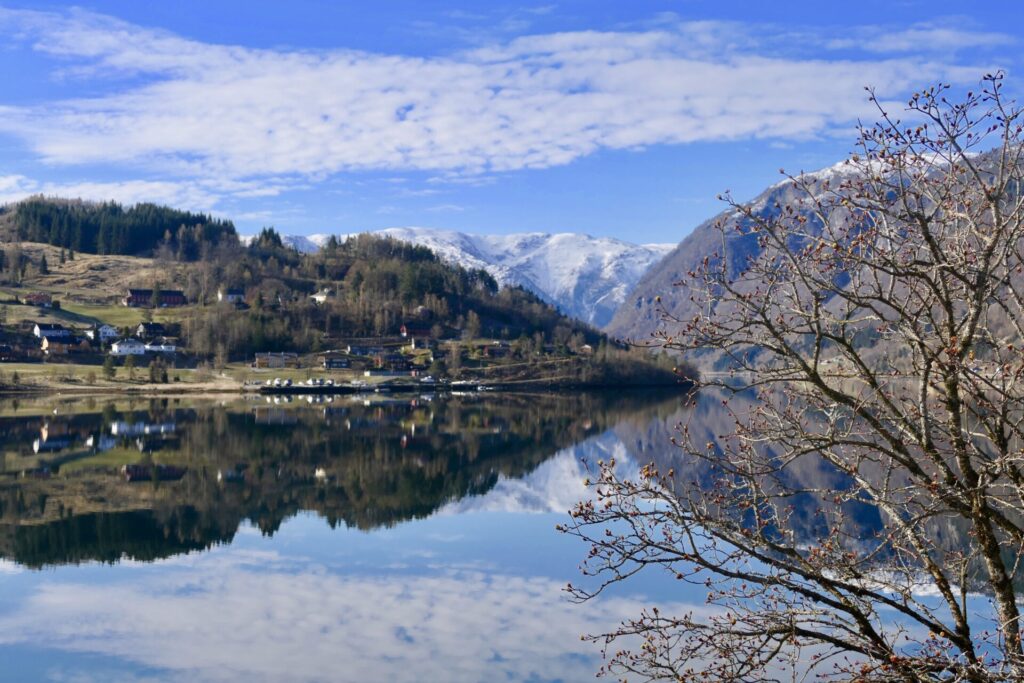
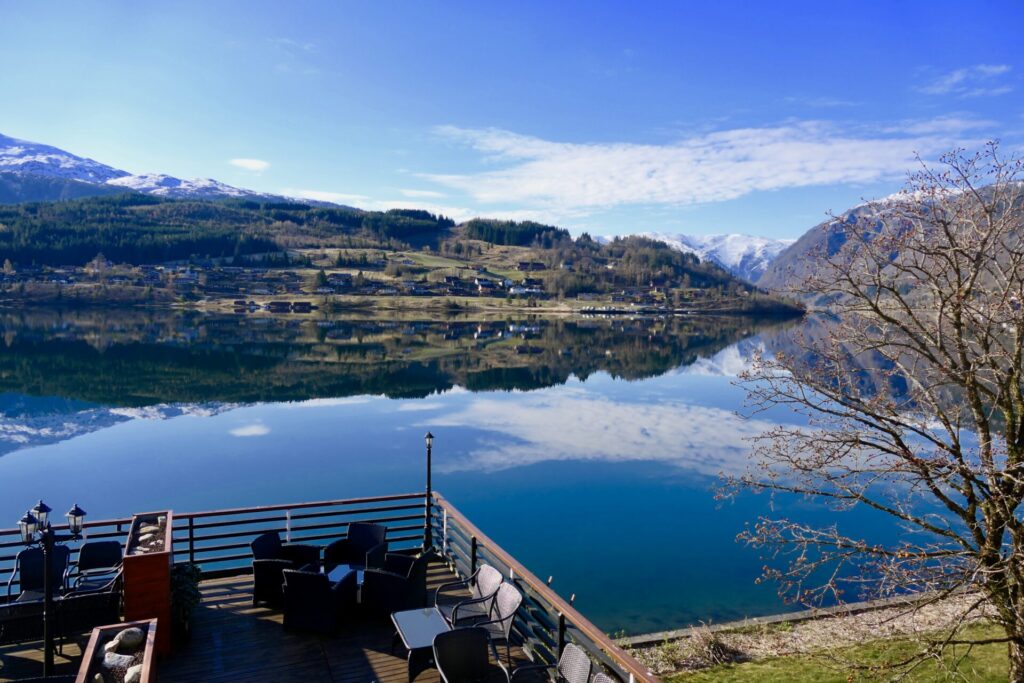
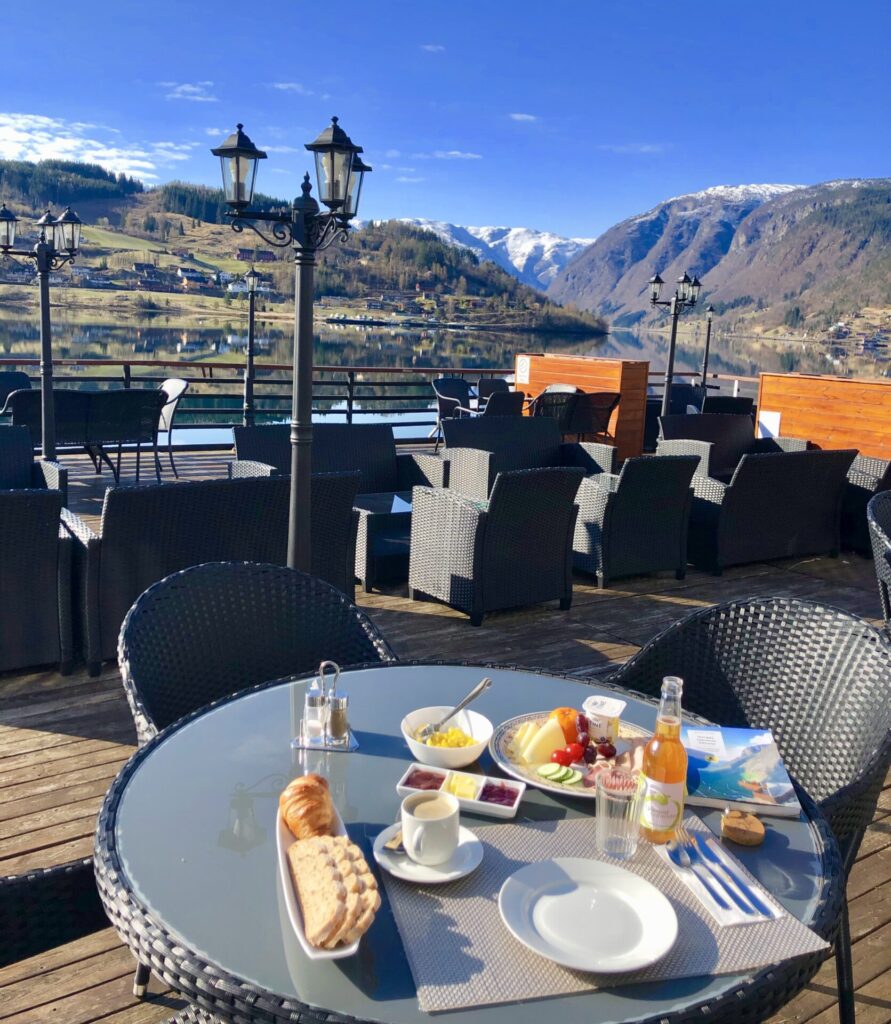
Another excellent accommodation in Ulvik is Brakanes Hotel, a more prominent hotel – which is also situated idyllically by the sea. The pictures below are from a trip in the Summer of 2020. The day we arrived was misty, the next day sunny and beautiful view of the fjord and surrounding mountains.
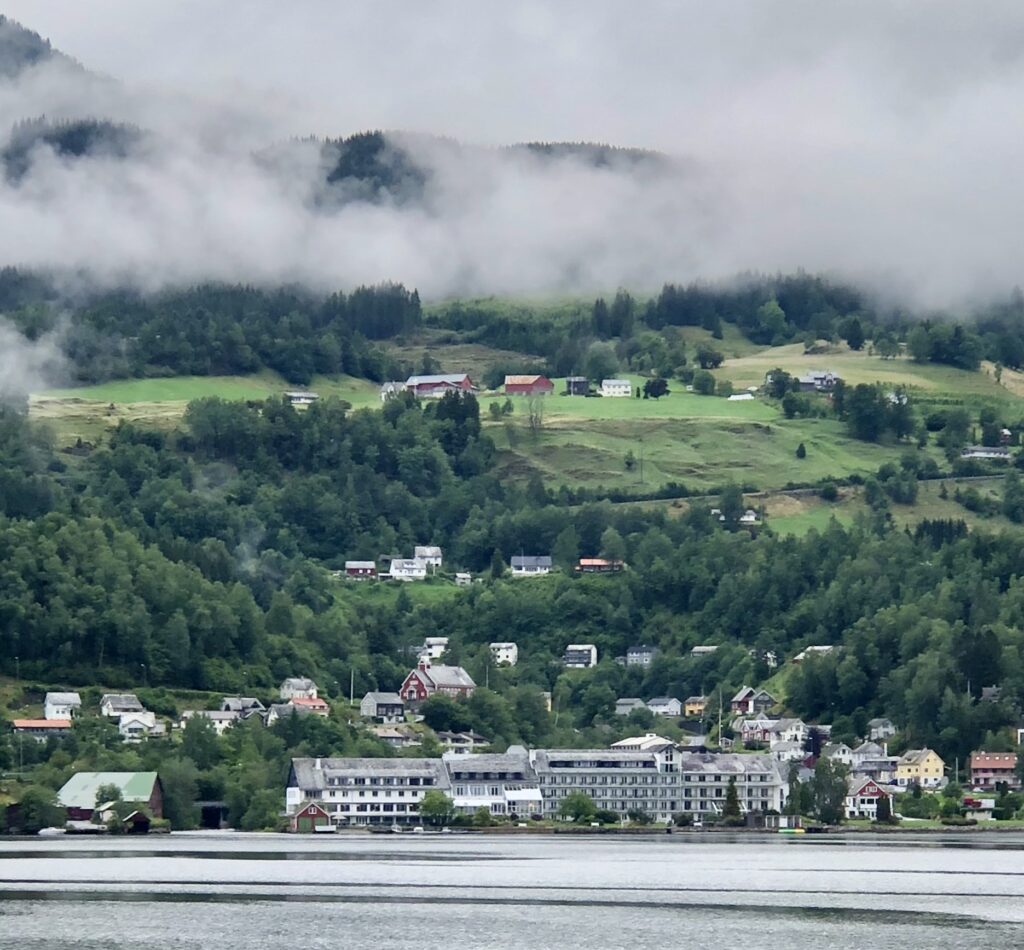

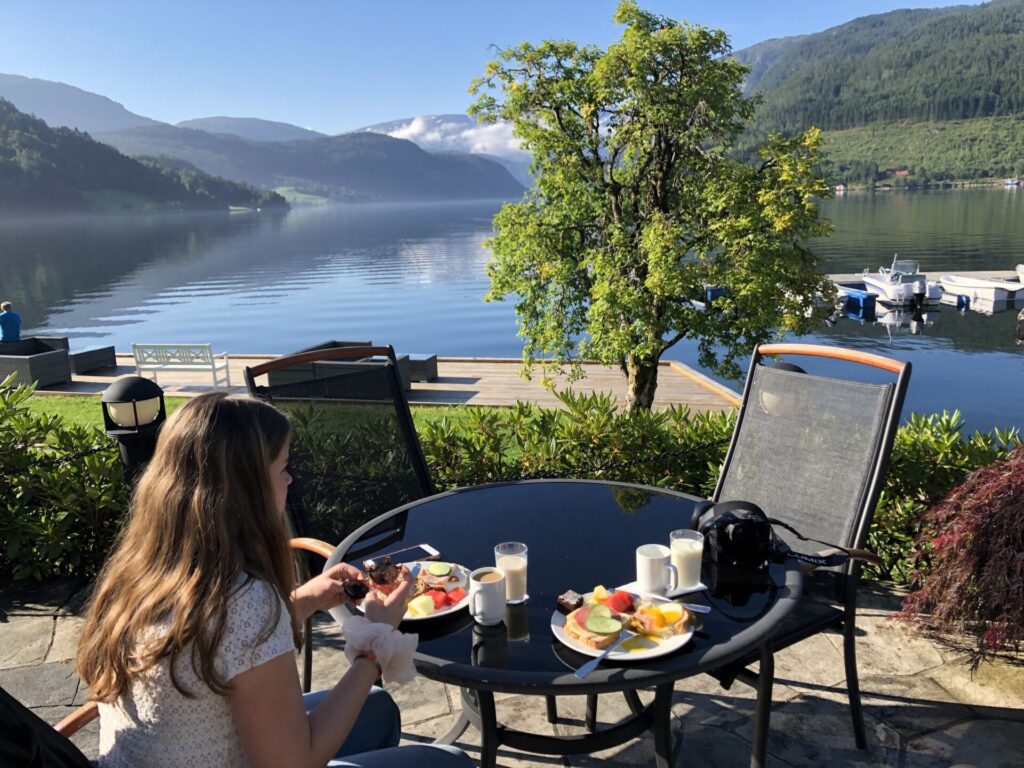

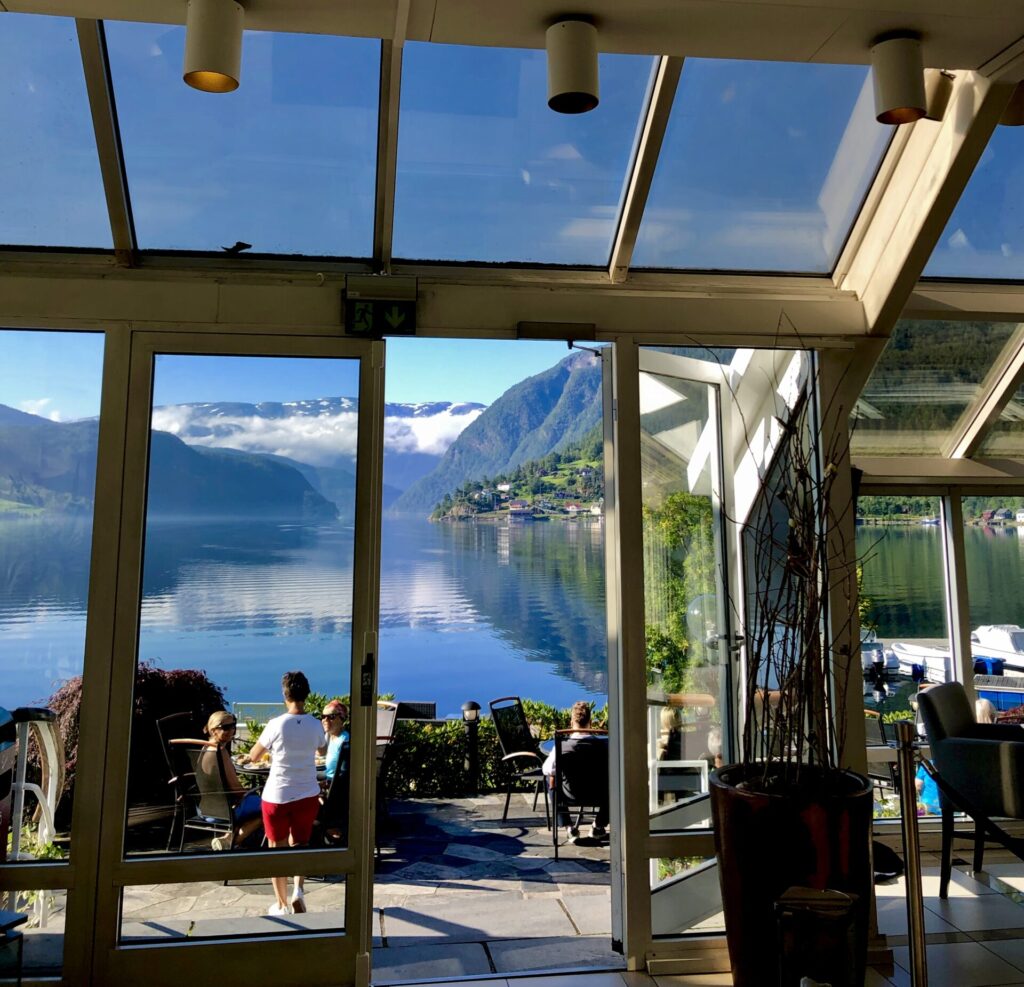
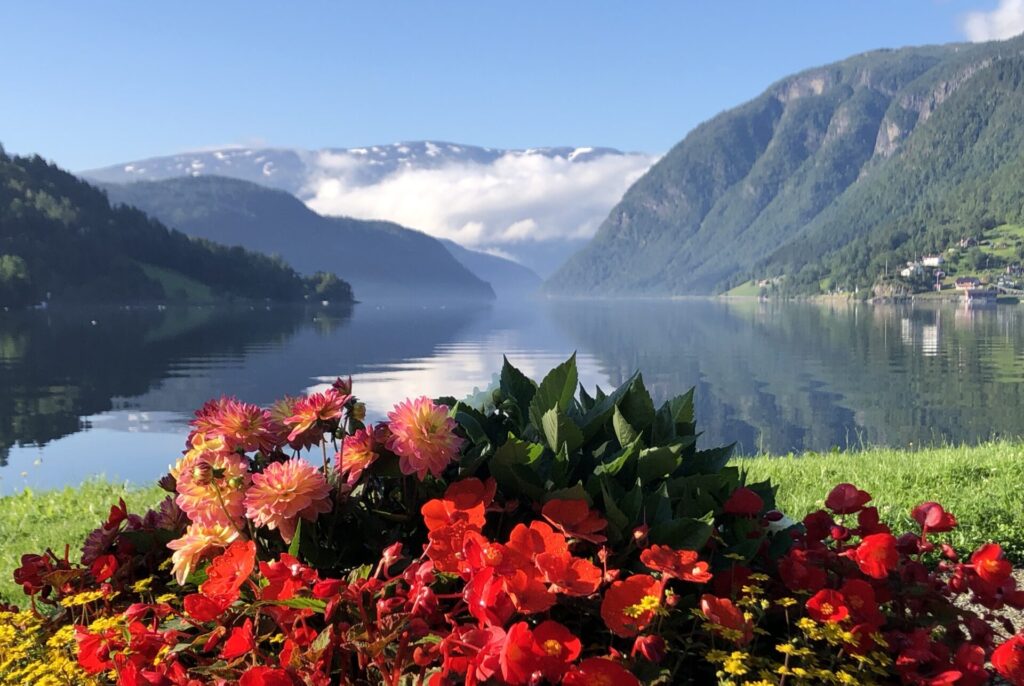
FROM ULVIK TO SKJEVSFOSSEN – ALONG RV572
Several sharp turns as we drove up the mountainside at the road RV572 from Ulvik. But what a view at the top! The village is situated idyllically by the fjord – surrounded by mountains and orchards on the mountain slopes.
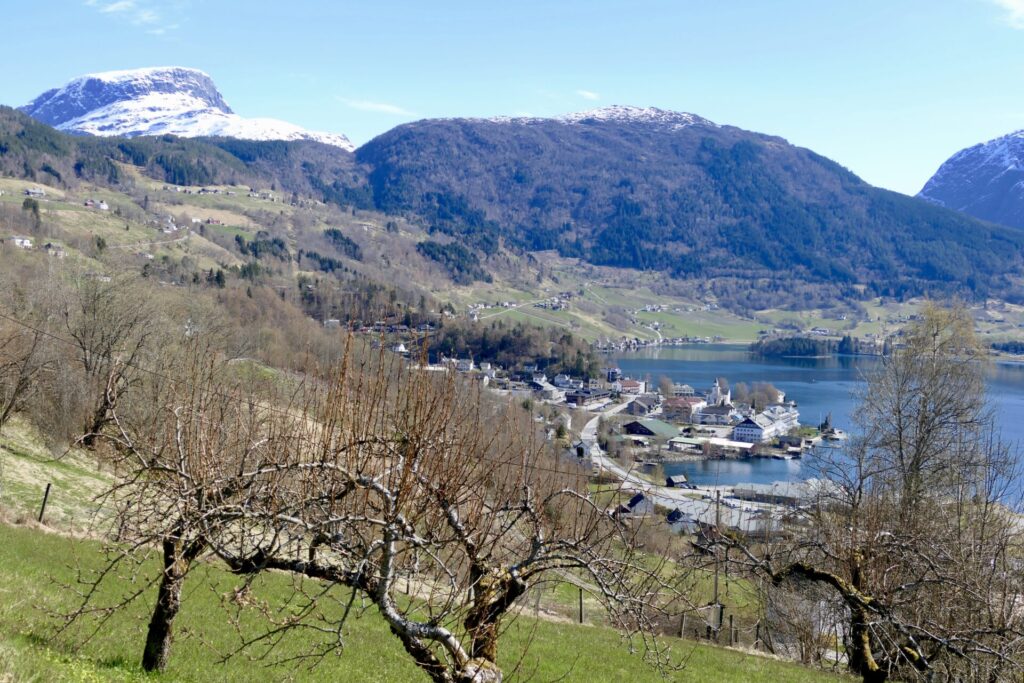
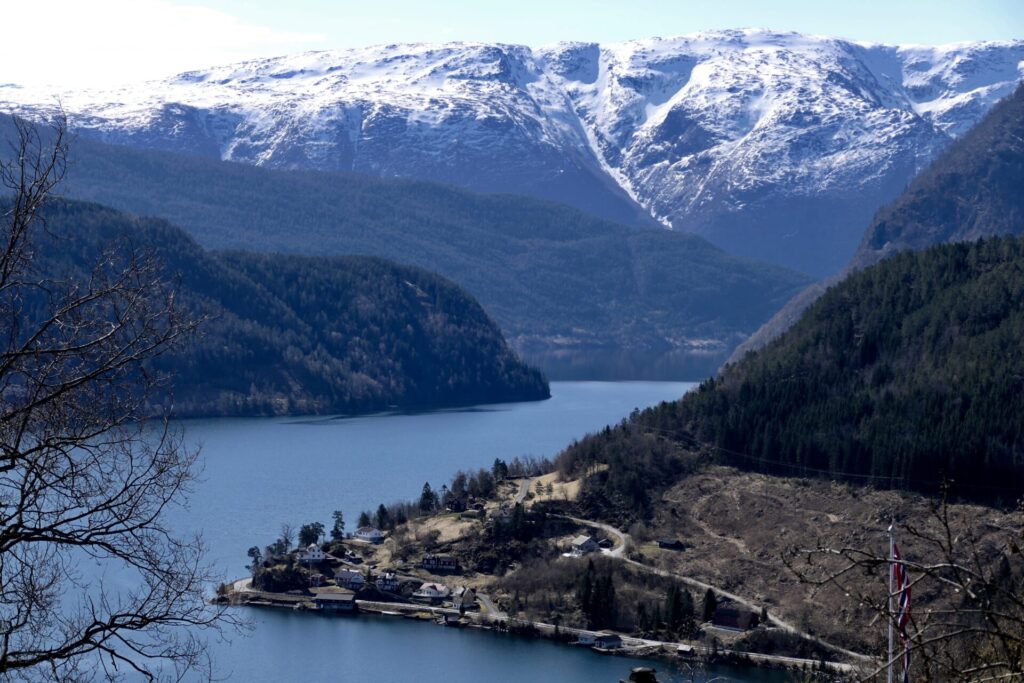
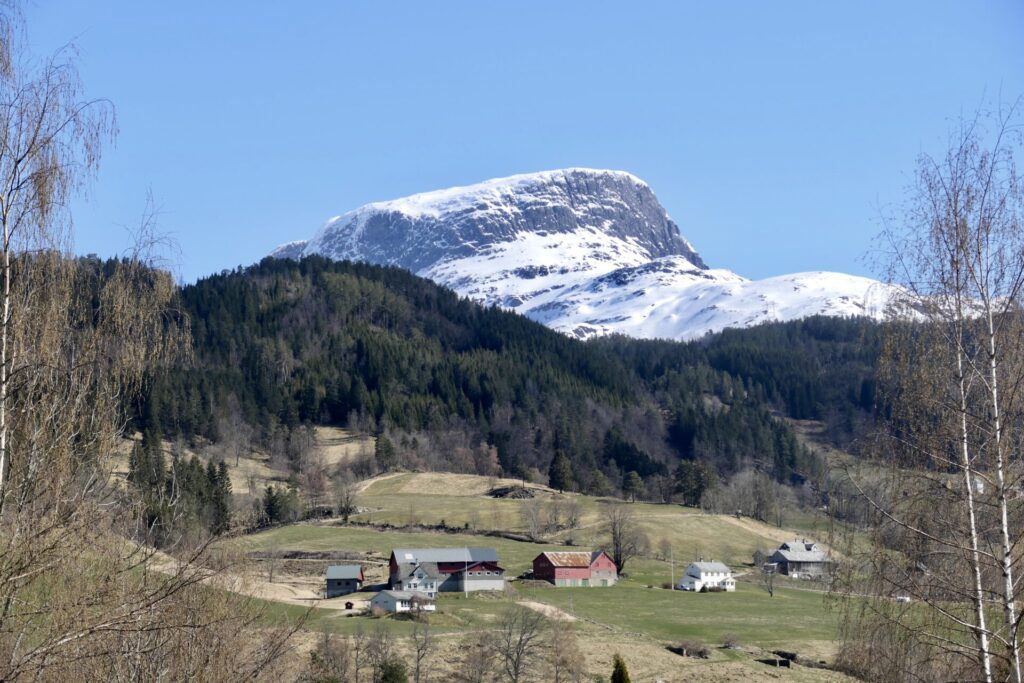
You will pass the lake – Espelandsvatnet. The crystal clear glass-like watery surface make an excellent subject for a beautiful landscape photo!

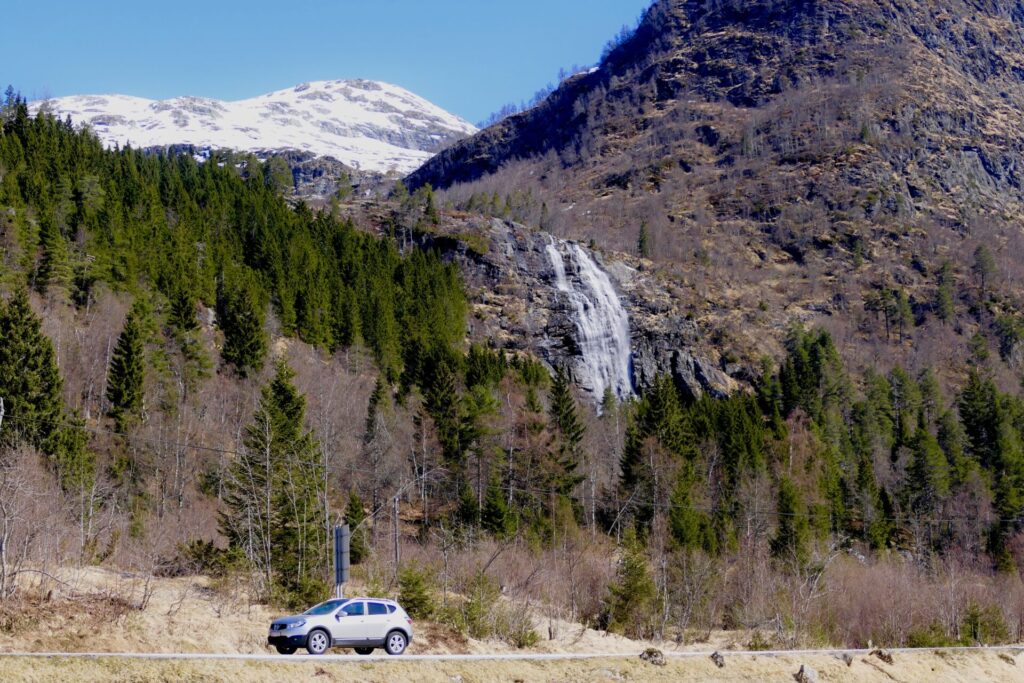

Just by this lake, you will see the waterfall – Espelandsfossen – with a fall of 150 m. We just viewed it from the road; the flow was not so strong when we visited. If you want to get close to the waterfall, the hike will take you about 10 minutes.

SKJERVSFOSSEN
A maybe more impressive waterfall is Skjervsfossen which is located on the road between Voss and Granvin. It has twin falls which drop 150 metres.
I drove the old RV13 route and first watched the waterfall from below.
I walked to the foot of the waterfall, an impressive sight!
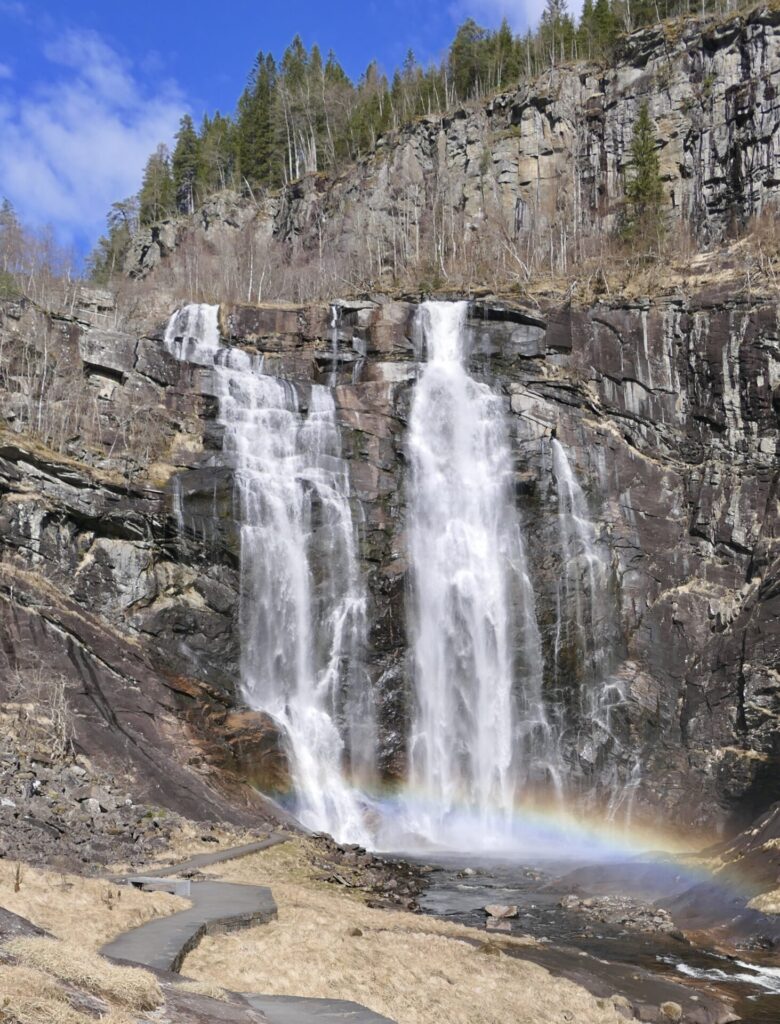
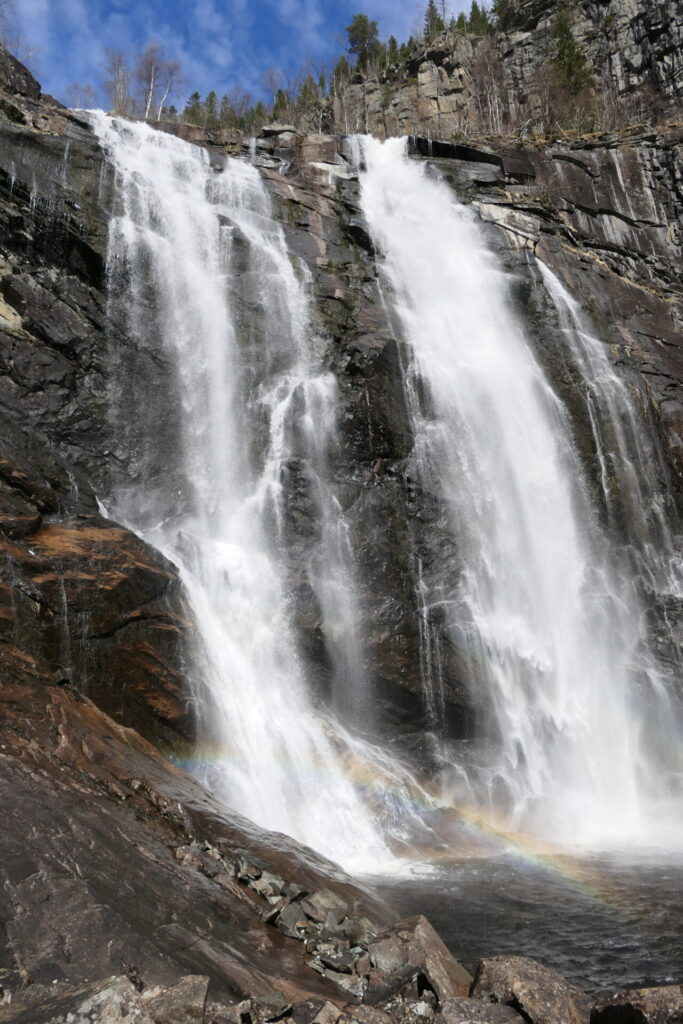

Afterwards, I drove up to the rest area, which is close to the top of the waterfall. The rest area has viewpoints, picnic areas, parking facilities and a restroom out of the ordinary! There is also a path and stairs to tables and benches for a picnic below the parking lot.
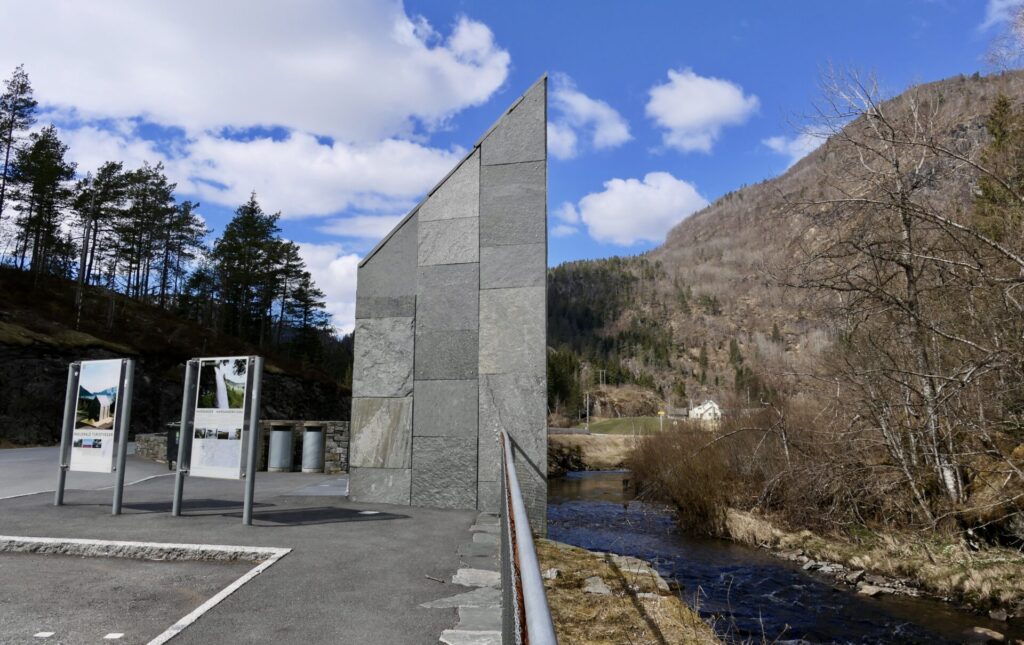
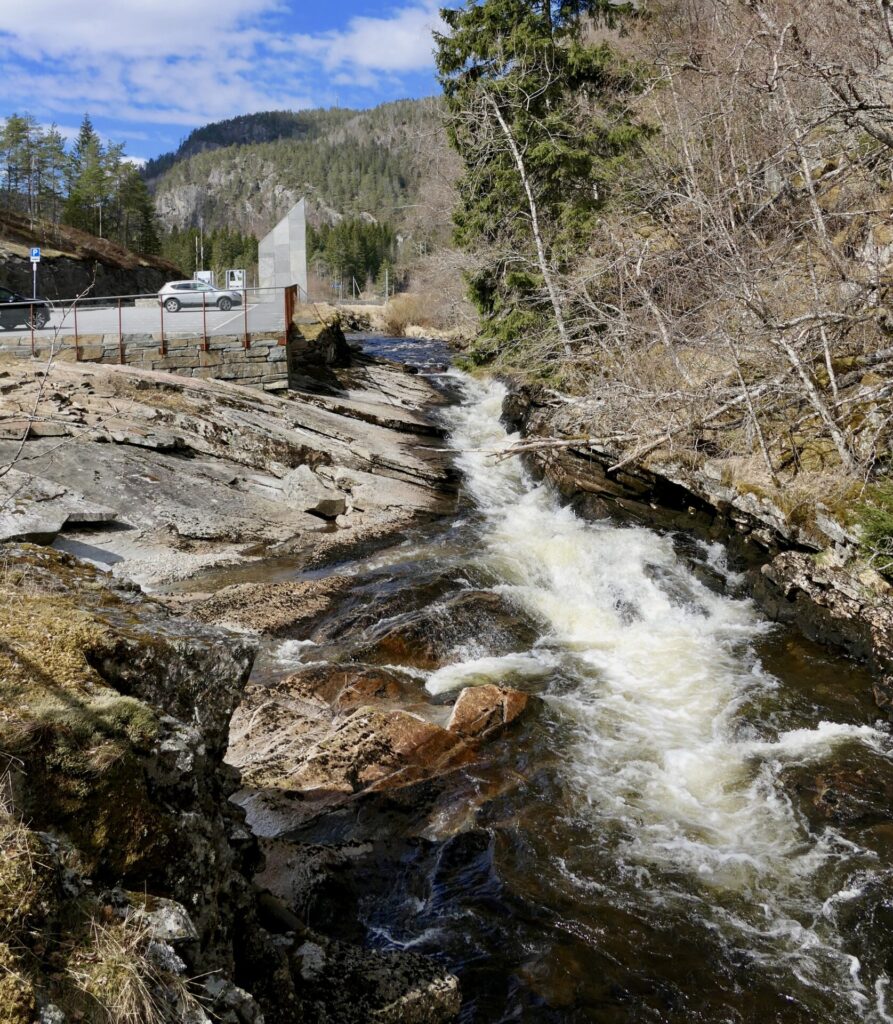
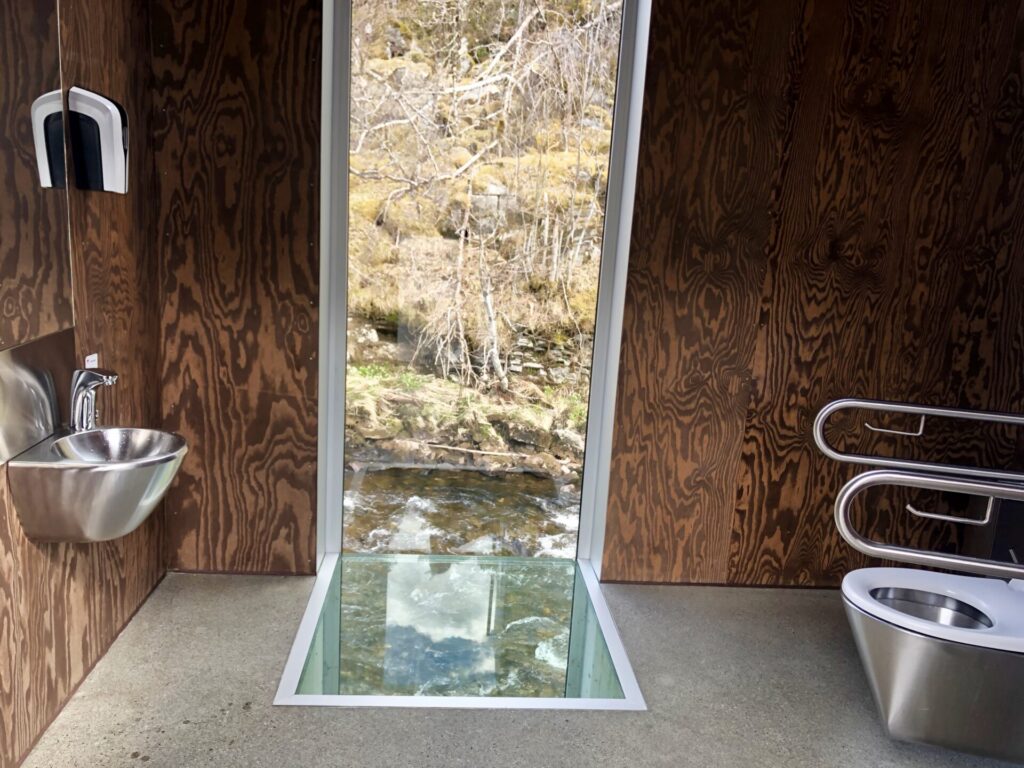
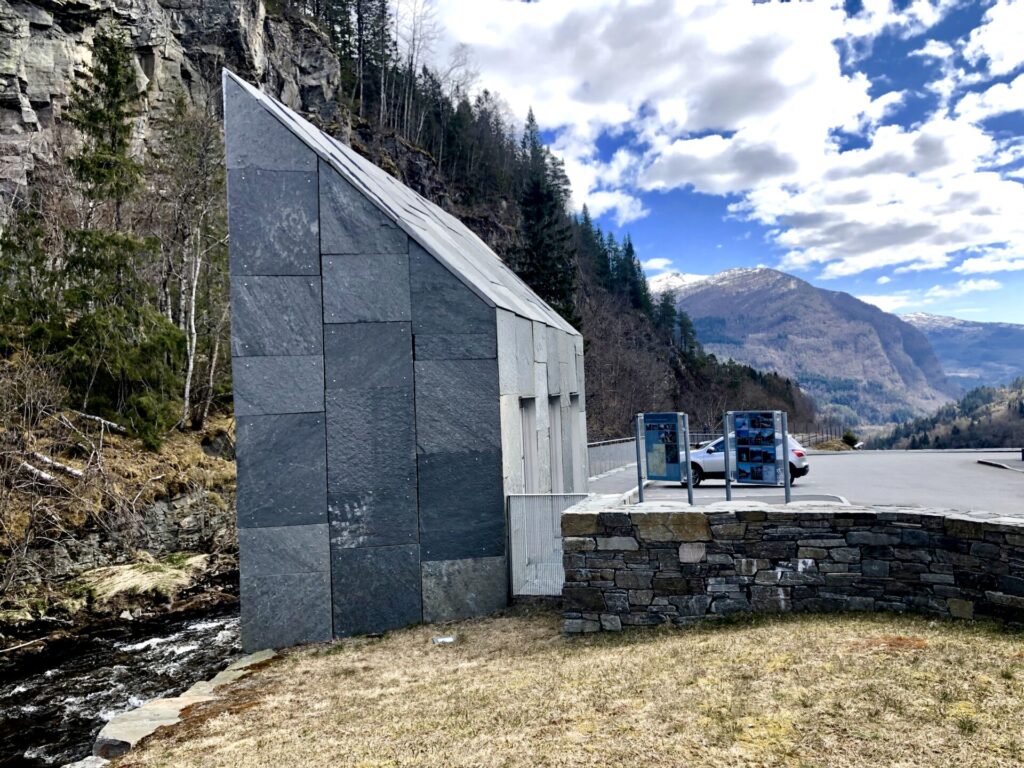
It is located on the road between Voss and Granvin and has twin falls plunging out from a height of 150 metres.
GRANVIN
Granvin is a small village at the end of a sidearm of the Hardangerfjorden.
On our way to Granvin, we passed Granvin church on the eastern shore of the Granvinsvatnet. The white, wooden church was built in a long-church style in 1726. The first church was likely a stave church. In 1726, the church was sold, torn down and replaced by a new timber-framed church building. In 1855, the church was renovated to the layout of the present-day church.
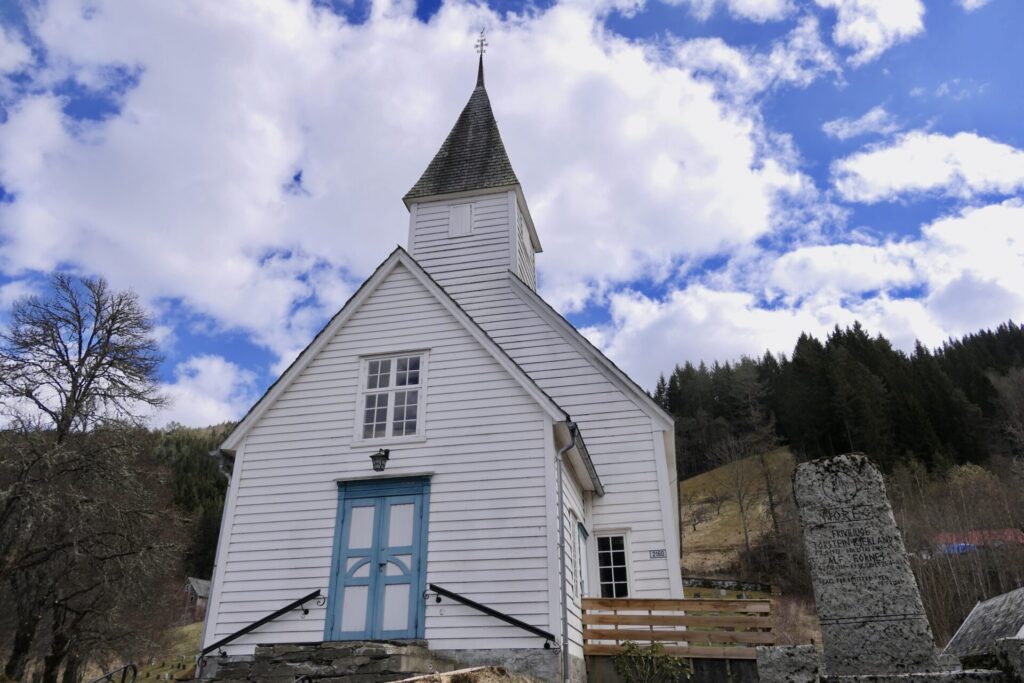
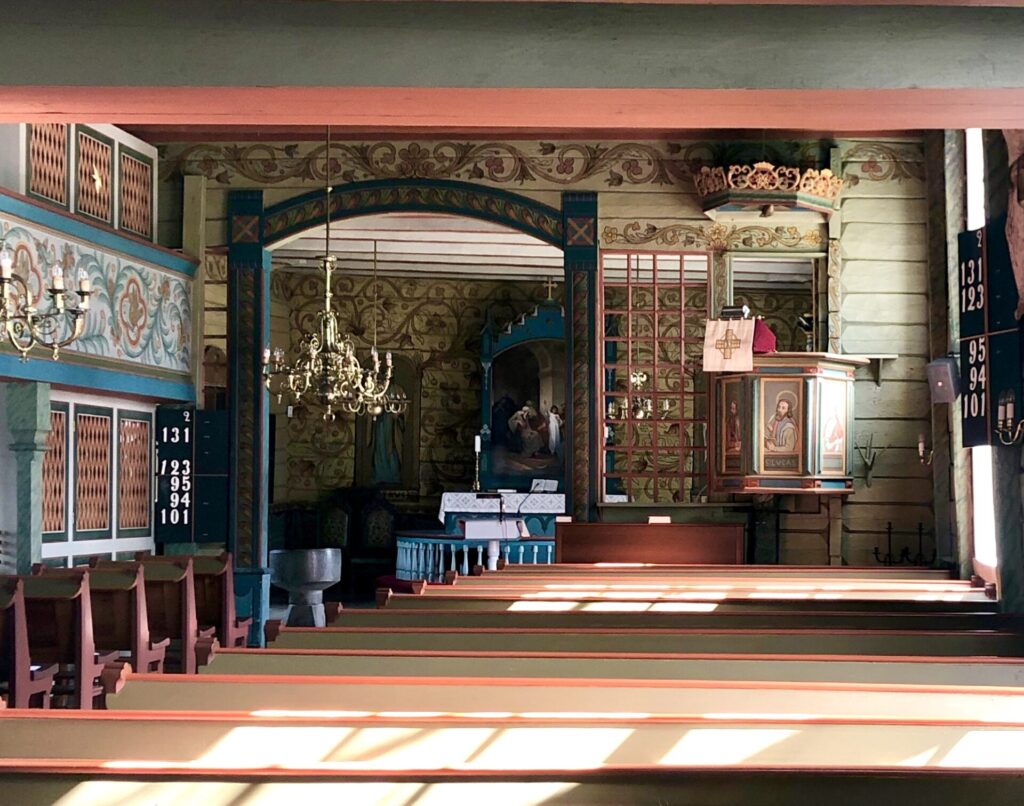

Granvin Bygdemuseum
The site includes six old buildings; the oldest house is Holvenstova, a main house from the 18th century. Granvin Bygdemuseum, with more than 1000 objects from the local community, is situated on the ground floor. In the basement of the cotter’s farm Lofloten, there is an exhibition of the collection from the world-famous botanist Johan Havaas.
In Bygdetunet, you can also find the memorial of the master fiddler Anders Kjerland.
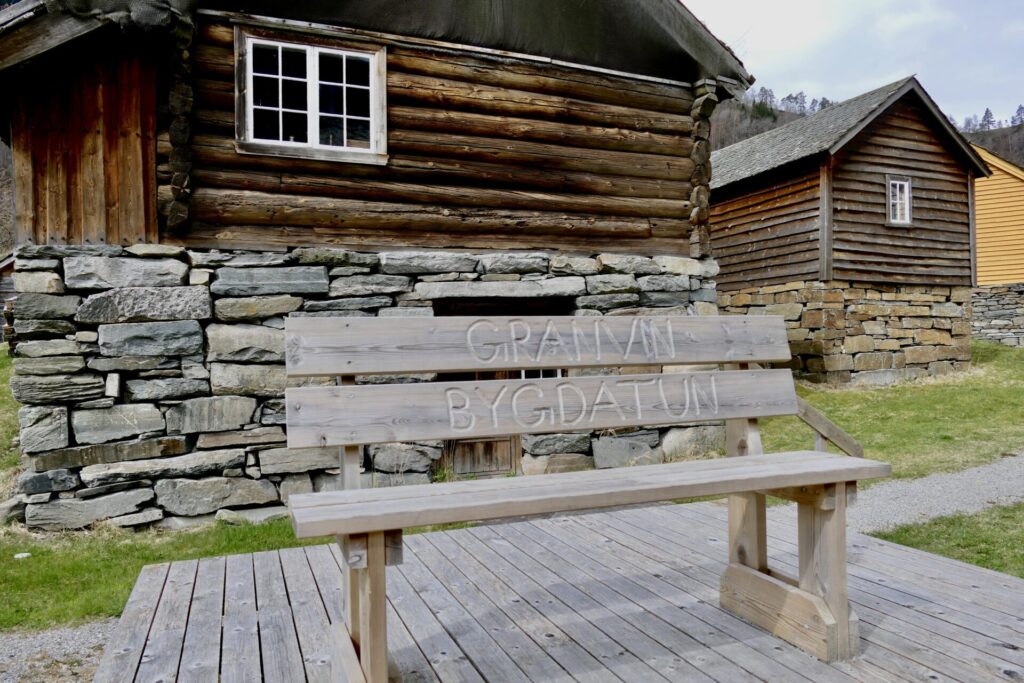
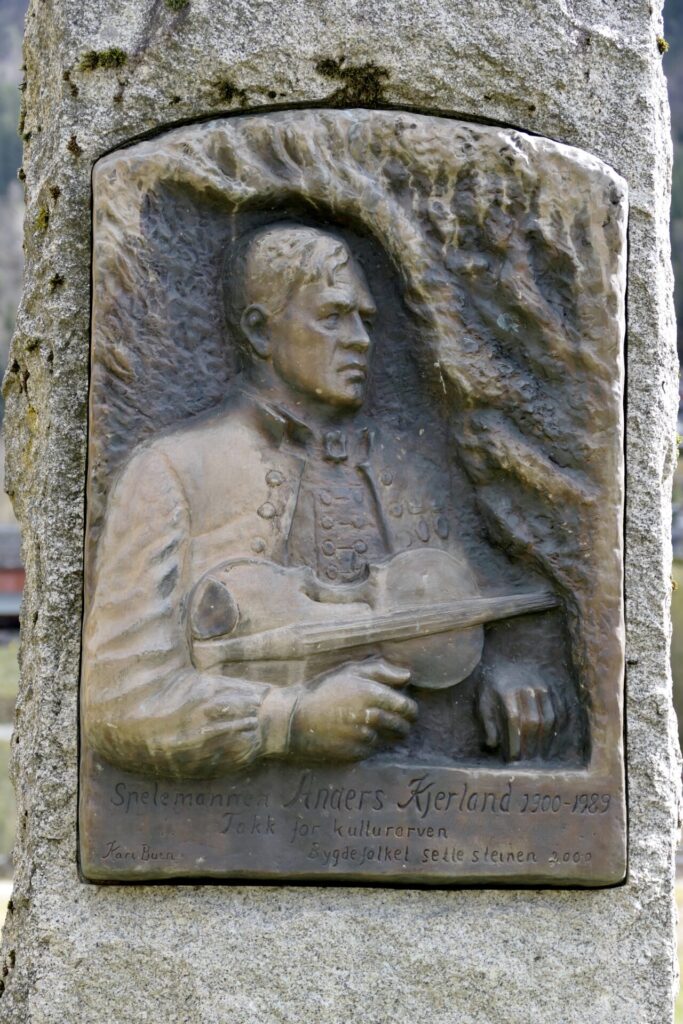
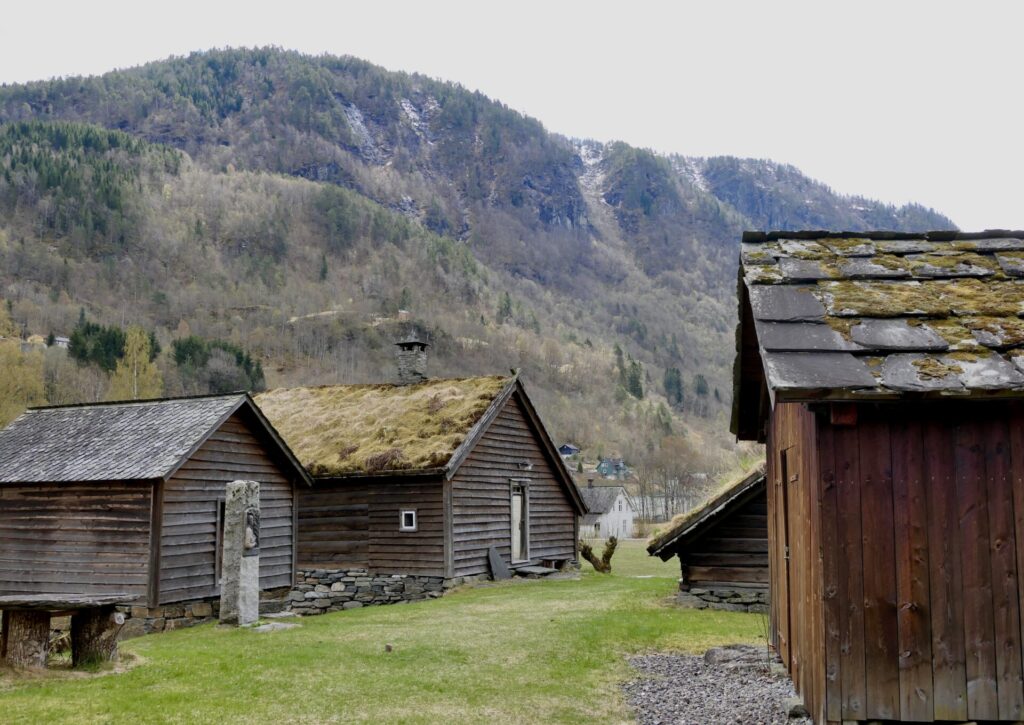
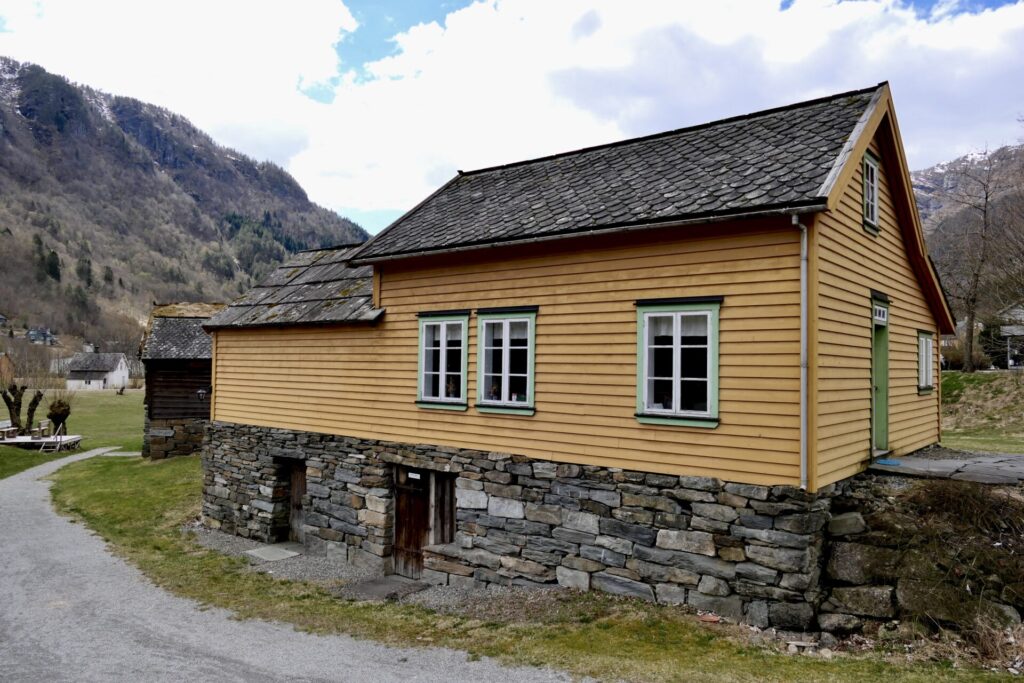
TYRVEFJØRA REST AREA – INDRE ÅLVIK
About 22 km south of Granvin, along Hardangerfjorden, I stopped by the restarea Tyrvefjøra outside Ålvik. It has an idyllic location at a small bay, and I enjoyed the view and the surroundings while sitting at one of the benches having a break.
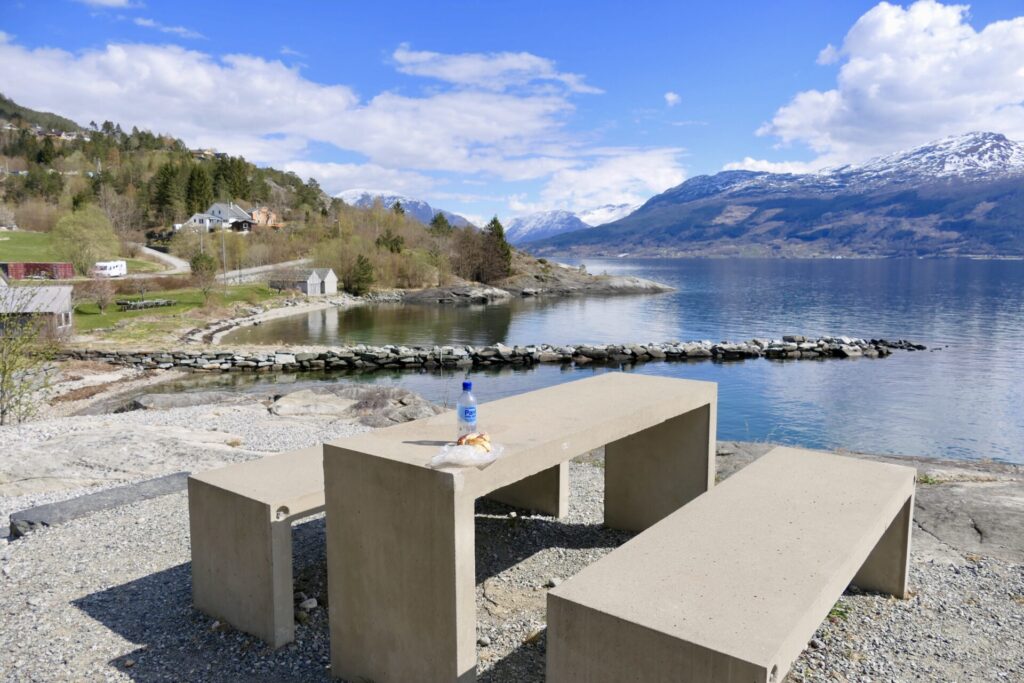
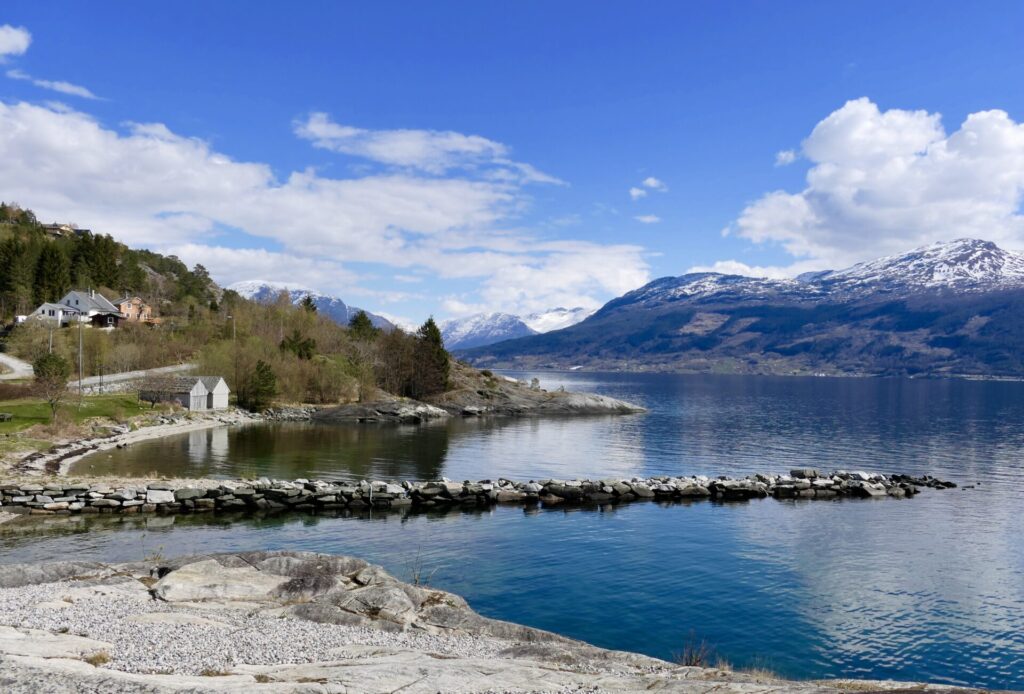
When I visited this place at the end of April, a new Scenic Route project was under construction, ready for the summer season of 2022. The old restroom was already demolished. The new restroom building is different from all others. The architects have designed the building as part of the landscape. The spectacular building consists of two separate toilets under one big roof that appears to be floating above the landscape. The outer walls of the toilets will consist of tree trunks with roots. Architect: Helen & Hard.
STEINSTØBERGET – NICE REST AREA
Steinstøberget – another 9 km south of Ålvik, is another nice rest area with a great view of Hardangerfjorden. The area is built on two levels, with service facilities and outdoor furniture on the upper level. Down by the fjord, there are good places to fish and opportunities to set up a barbecue.

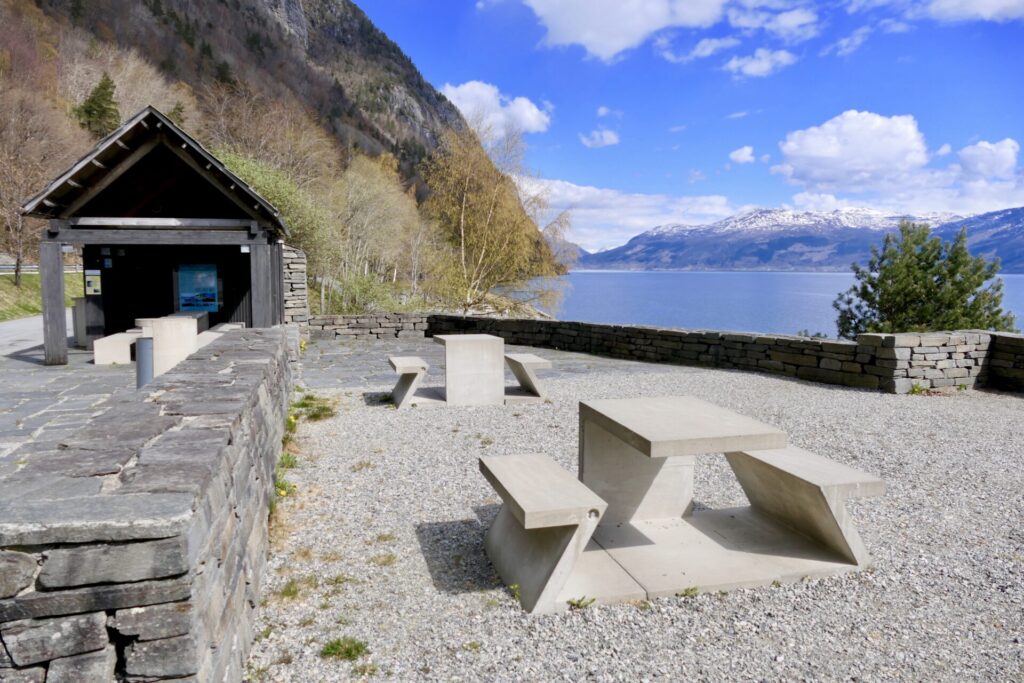


FYKSE AREA
FYKSE BRIDGE
Fykse bridge spans a small branch of Hardangerfjorden called Fyksesundfjorden, which goes between the villages of Øystese and Ålvik. The bridge (opened in October 1937) is 344 metres long, and the largest span is 230 metres.
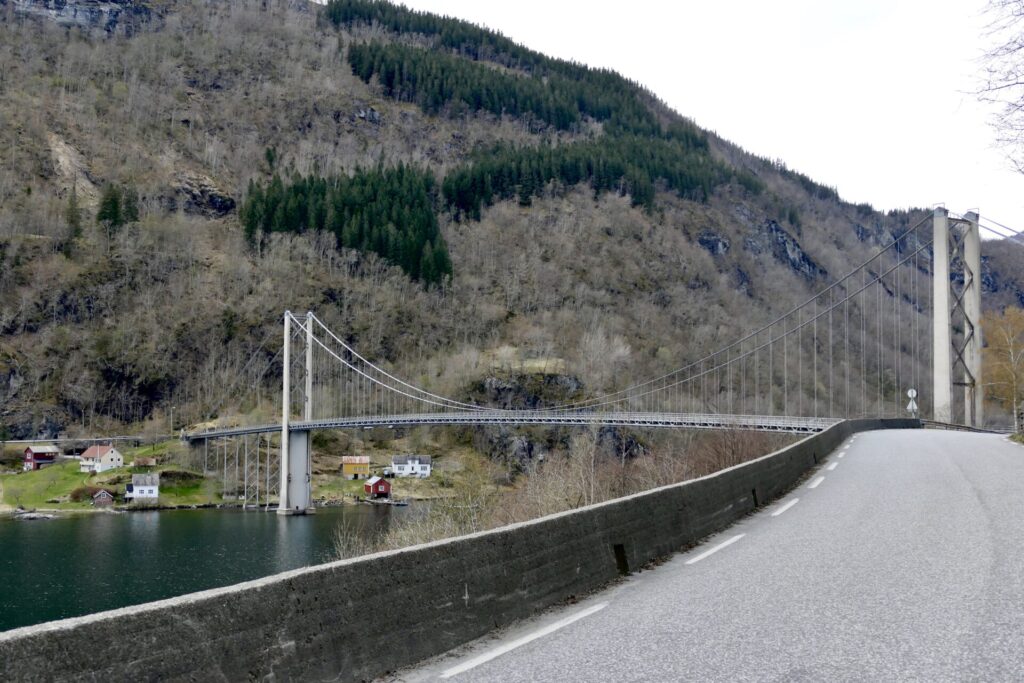
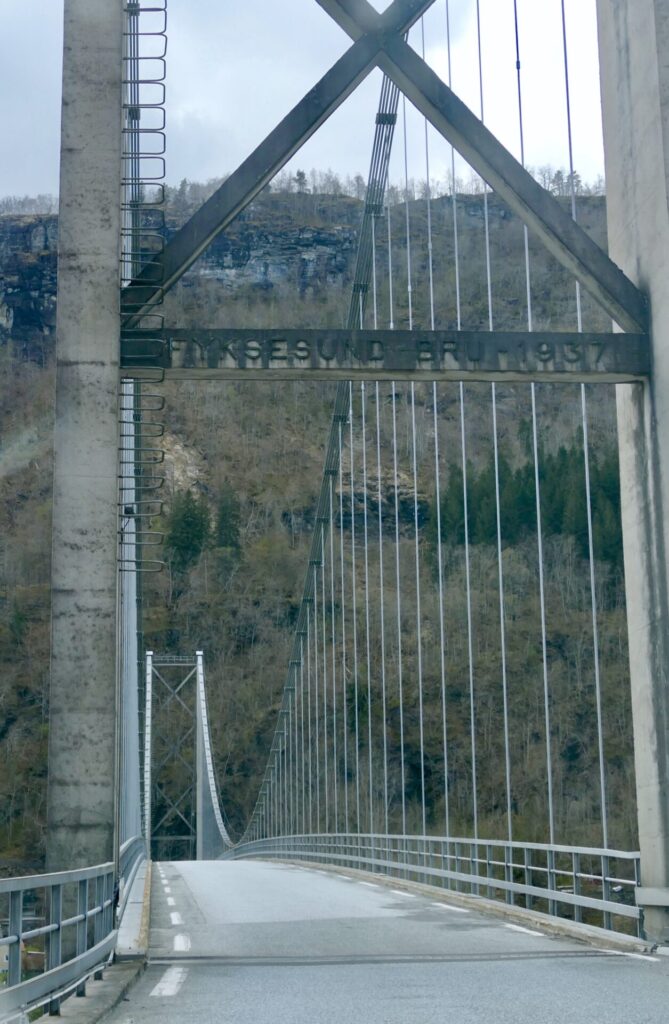

I had a small detour to Skarsvatnet (Gould fish lake). I did a right turn after the bridge and followed the road Fv131 along Fyksesundfjorden for a couple of kilometres. This area has a rich cultural history. At the small village, Botnen at the end of Fyksefjorden lived the makers of the Hardanger fiddle – a national instrument of Norway. In modern designs, this type of fiddle is very similar to the violin.
BOTNEN – AND THE HARDANGER FIDDLE
Botnen at the end of Fyksefjorden is still only accessible by boat. In Botnen lived Isak Nilsen Botnen (1663-1757) and his son Trond Isaksen, two well-known early makers of the Hardanger fiddle. The instrument is also called Norwegian hardingfele, or hardingfele, and it has four bowed strings positioned above four or five metal sympathetic strings.
The Hardingfele is used for dancing, accompanied by loud rhythmic foot-stomping. It was also traditional for the fiddler to lead the bridal procession to the church.
The instrument is often highly decorated, including carved animals (usually a dragon or Norway’s lion) or a carved female head, black ink decorations called “rising”, and more.


SKARVATNET – GOLDFISH LAKE
The road Fv131 along the Fyksefjorden is relatively narrow. After about 2 km, the road made some turns on the way up to the lake.
The Goldfish Lake gets its name from the colour of the fish, “gullfiskvederbuk”. The fishes were imported from the Congo and stocked into the little lake in 1914.
Nice place to have a break and a pleasant picnic. It has a small woodshed with two picnic tables and access to the lake where you easily can see lots of goldfish.

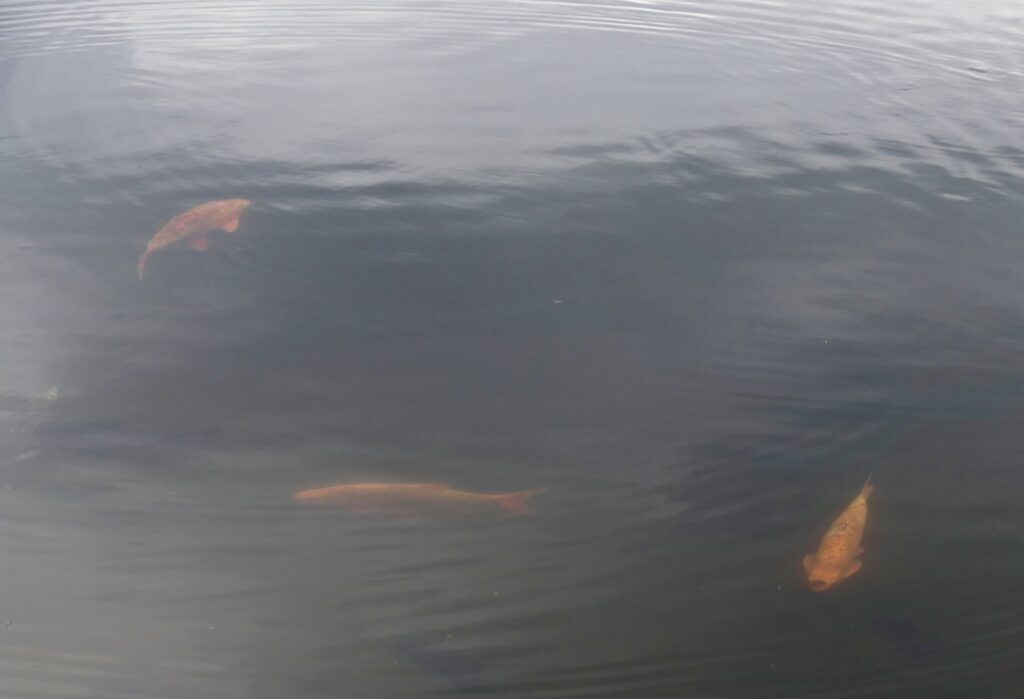
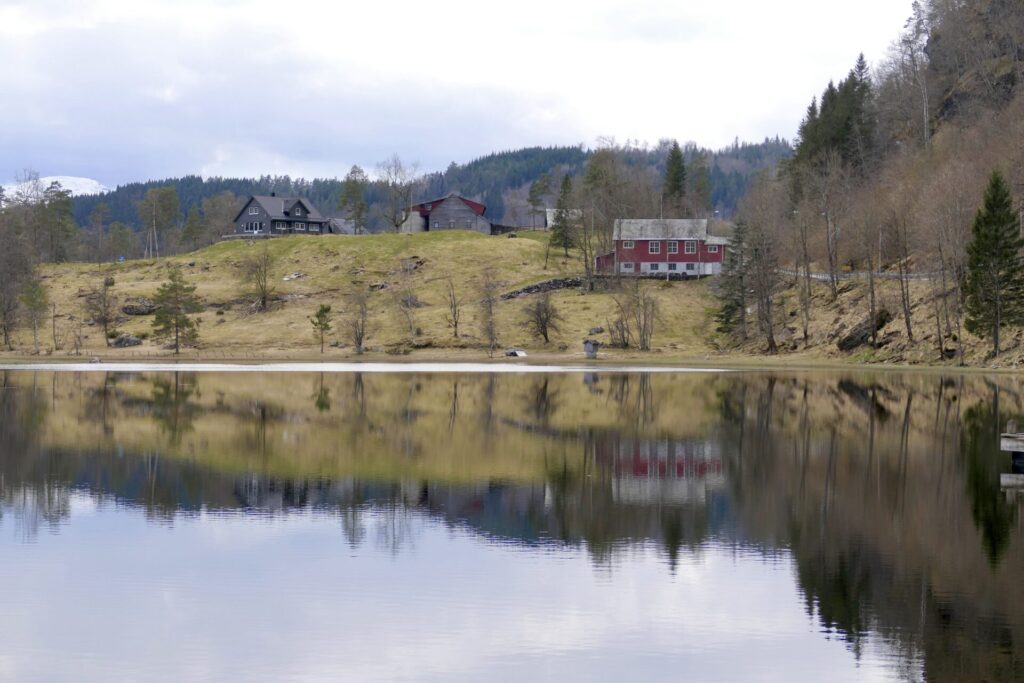
After leaving Goldfish Lake we were heading for ØYSTESE, about a 4 km drive southwards.
ØYSTESE

Attractions in Øystese:
KABUSO ART CENTRE & INGEBRIGT VIK MUSEUM.
Kabuso has temporary exhibitions, concerts and other arrangements throughout the year.
Ingebrigt Vik is one of Norway’s premier sculptors and one of his major works is the monument of Edvard Grieg in the composer’s hometown Bergen.
Øystese is Ingebrigt Vik’s hometown and this museum houses a fine collection of his works
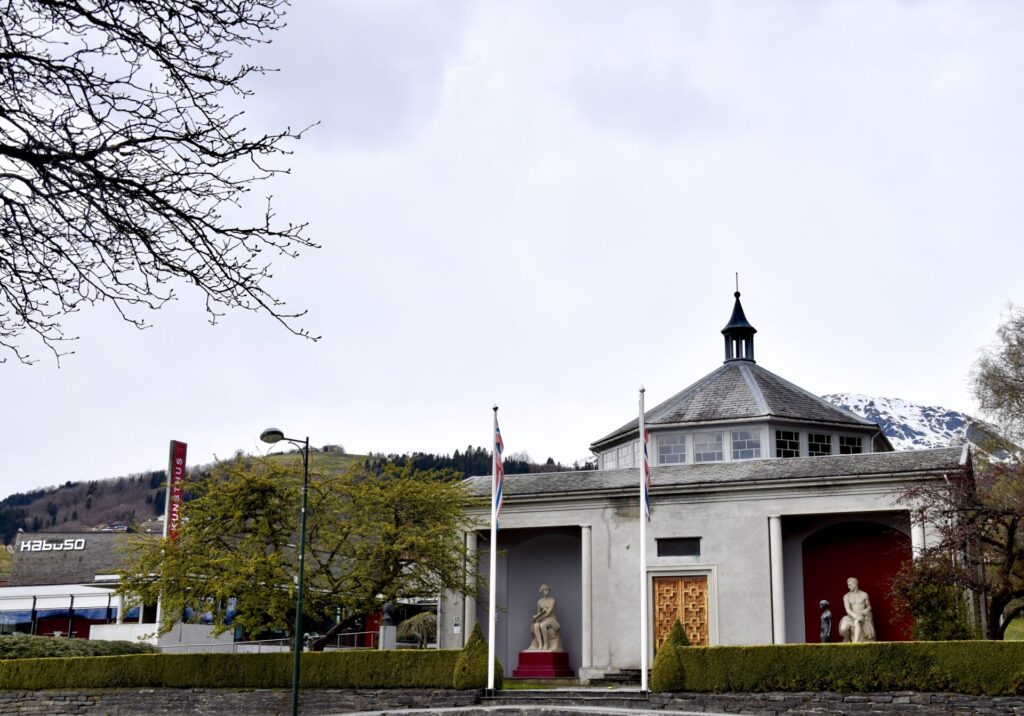
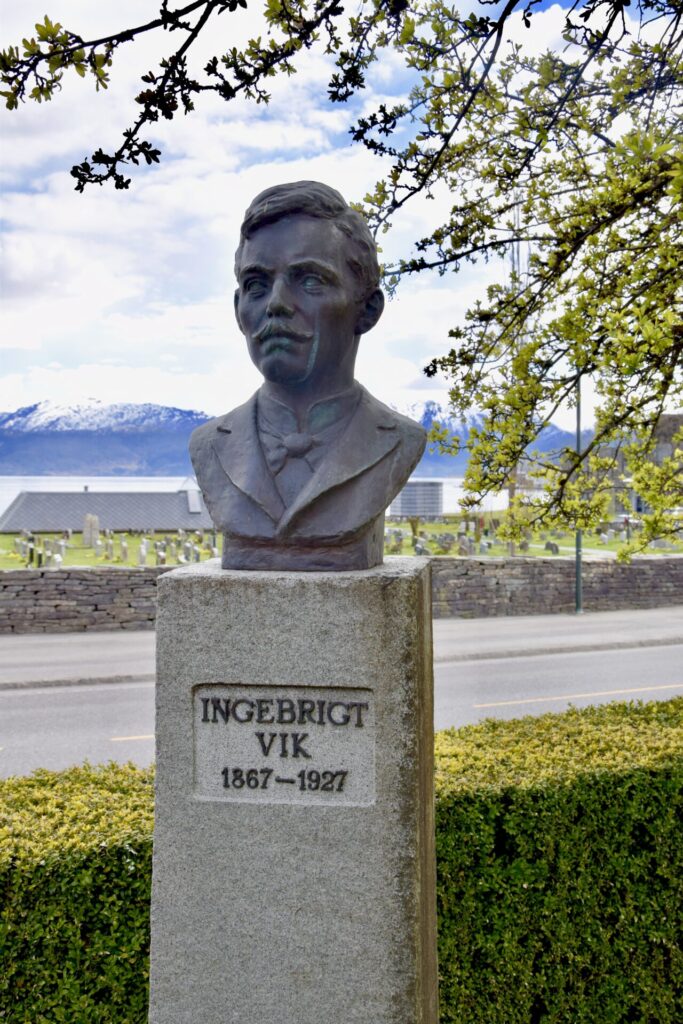
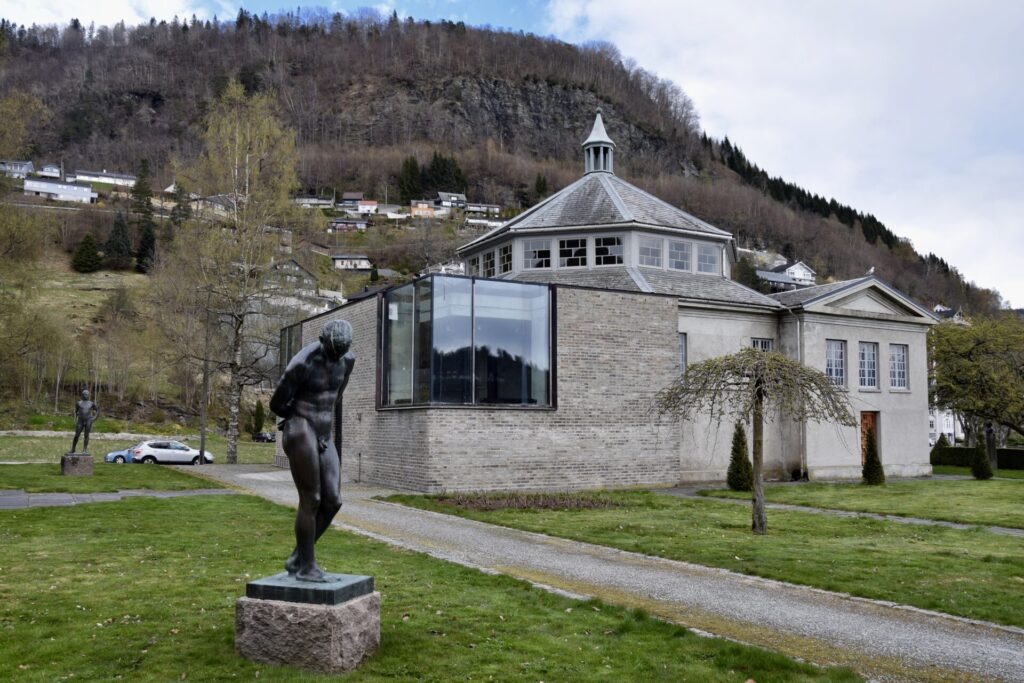
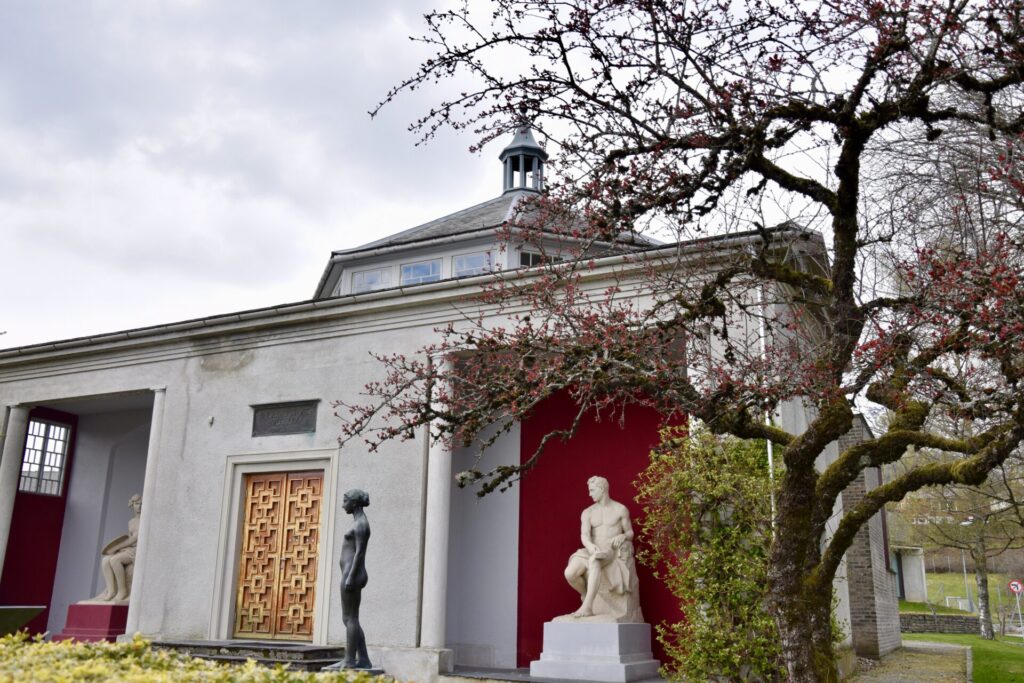
Just opposite the museum – you will find Øystese Church. The first church in Øystese was a stave church built before the year 1300.
The church was in use until 1868, when it was torn down to make room for a new, much larger church. The present wooden church was built in 1868.


STORTEIGEN FARMSTEAD – KVAM BYGDEMUSEUM
Storteigen, just outside the centre of Øystese – was initially worked as a croft from 1820 until 1905, and those who lived here were obliged to work on the main farm – Oddmundsbruket in Øvre Vik.
Some of the buildings at Storteigen were moved from other farms in the area. Among these are Torsteinstov and Vavollstova, the oldest buildings at the farm.
Torsteinstova (Torstein Lodge) comes from Torstein Farm in the Øystese hamlet. The lodge was built as a smokehouse in 1661, chamber and lofts 1771.
Vavollstova (smokehouse) and the stabbur (storehouse) come from Nilsbruka in the hamlet of Øvre Vik. Valvollstova was built in 1685, at the beginning as a lodge, later used as a smokehouse. A wealthy man constructed and owned the lodge, probably trying to impress his second marriage.
The storehouse is probably built in the 1700s. It has two floors; grain and flour was stored upstairs, and salted fish and meat downstairs
The buildings were moved in the period from 1978 until 1984, and Storeteigen opened as a visitor centre and museum in 1986.
Storeteigen is now owned by Kvam municipality and is run by Hardanger and Voss Museum.
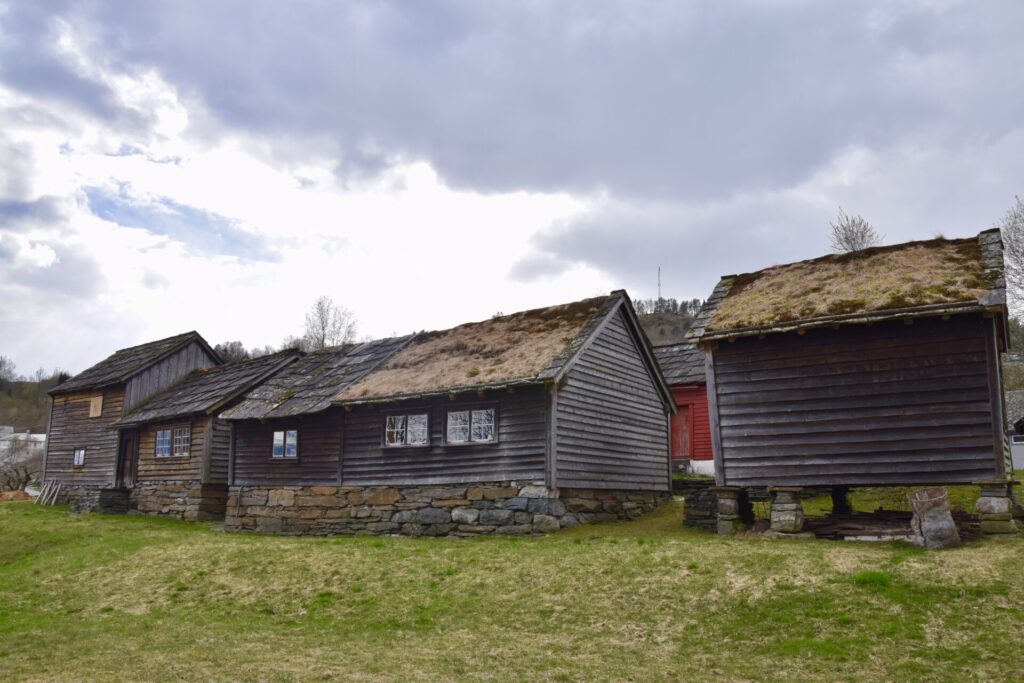
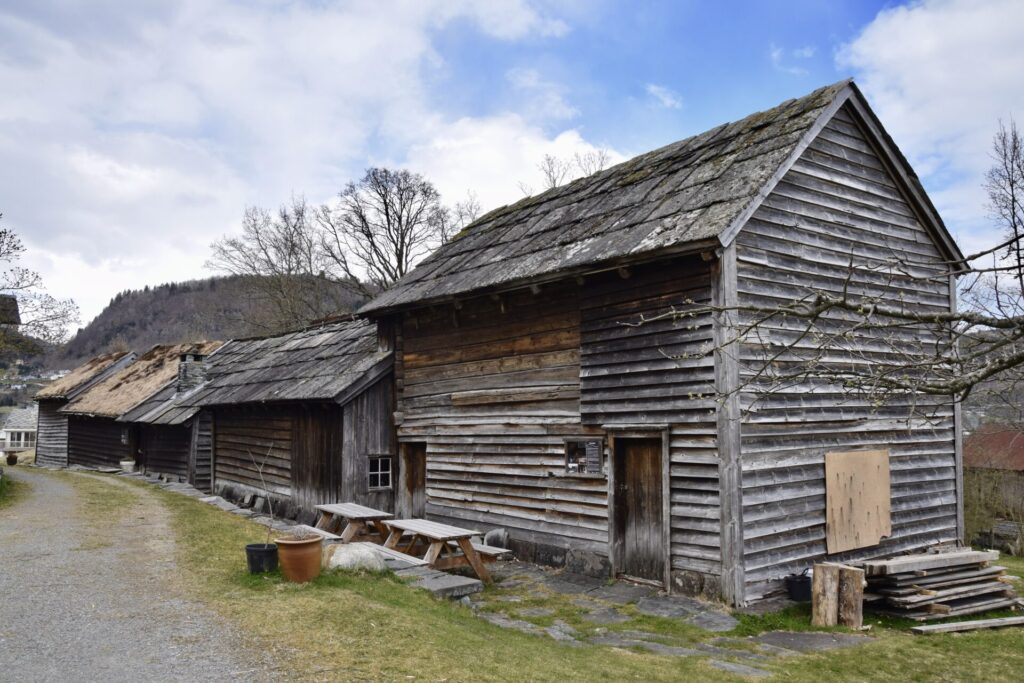
STEINDALSFOSSEN

The waterfall is located 2 km west of Norheimsund, just by the road Rv7.
It has become a popular attraction and is one of the most photographed waterfalls of the country.
Steinsdalsfossen is 46 metres high, with a main drop of 20 metres, and has the greatest volume when the snow melts in May and June. Steinsdalsfossen is part of the Fosselva river that comes from the water of the lake Myklavatnet, located 814 metres above sea level in the mountains above the waterfall.
Even though it has a drop of only 50 m, it is unique in the way you can walk behind it.
The waterfall is easily accessible close to the road. There is a path leading up and goes behind the waterfall to the other side. Quite amazing!
Tourist information with cafe close by the parking lot.

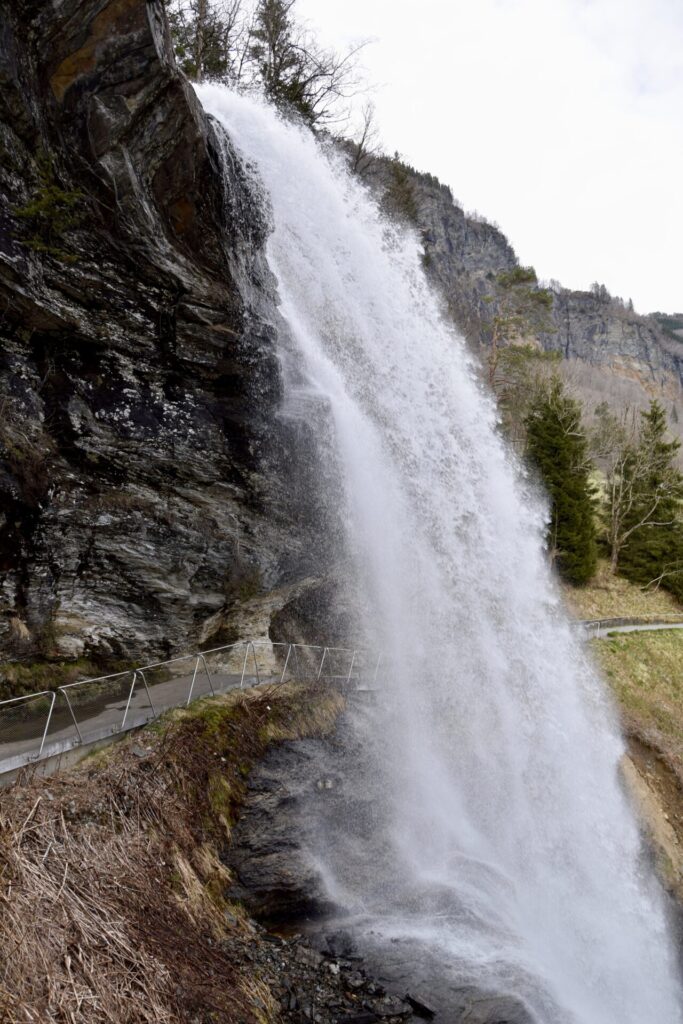
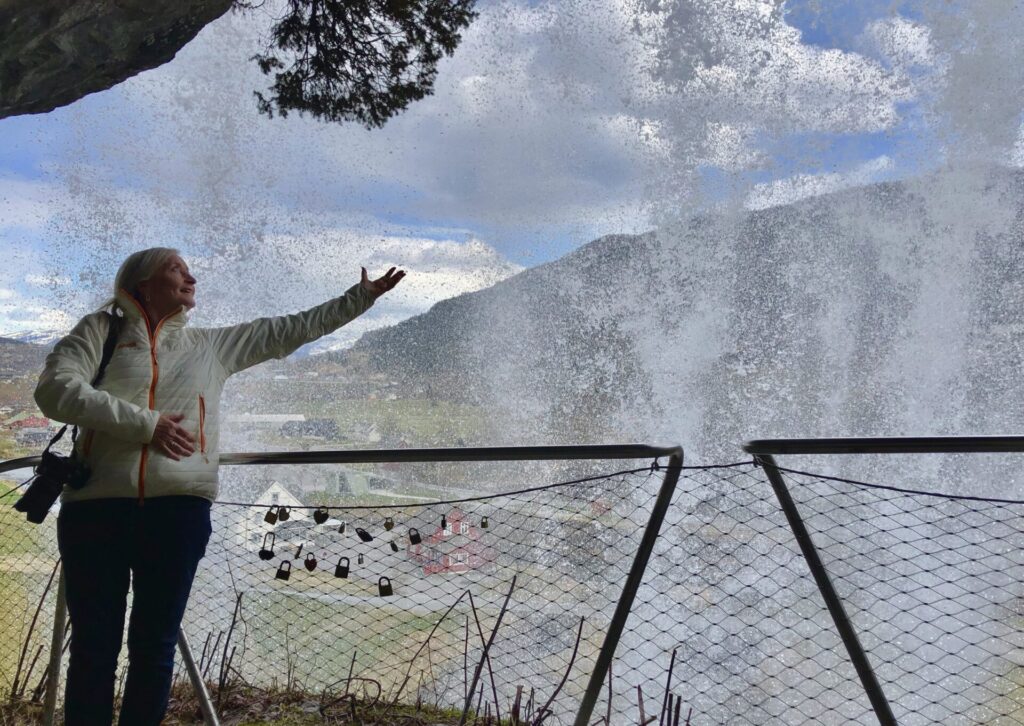
These pictures are from April 2021.
I have taken photos of this waterfall at an earlier visit, with more impressive flow. This is from May 2005:
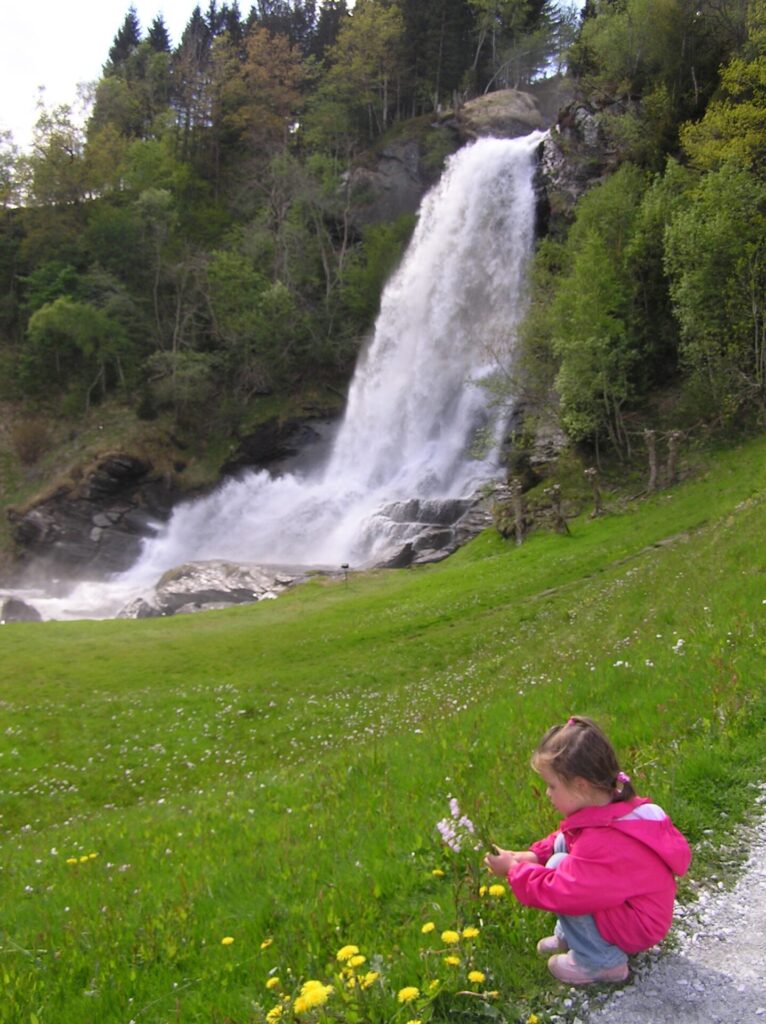
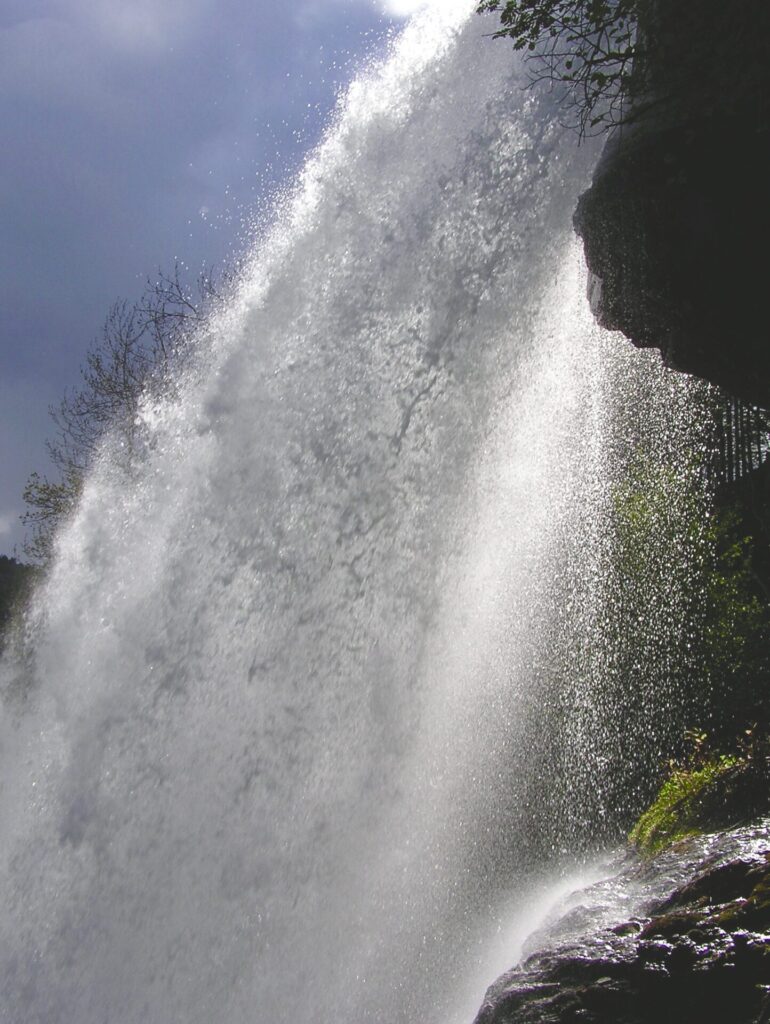
A fun fact – this waterfall was a favorite of Emperor Kaiser Wilhelm II of Germany. He frequently visit Steinsdalsfossen every Summer (except a couple of them) between 1889 and the start of World War I in 1914.
NORHEIMSUND
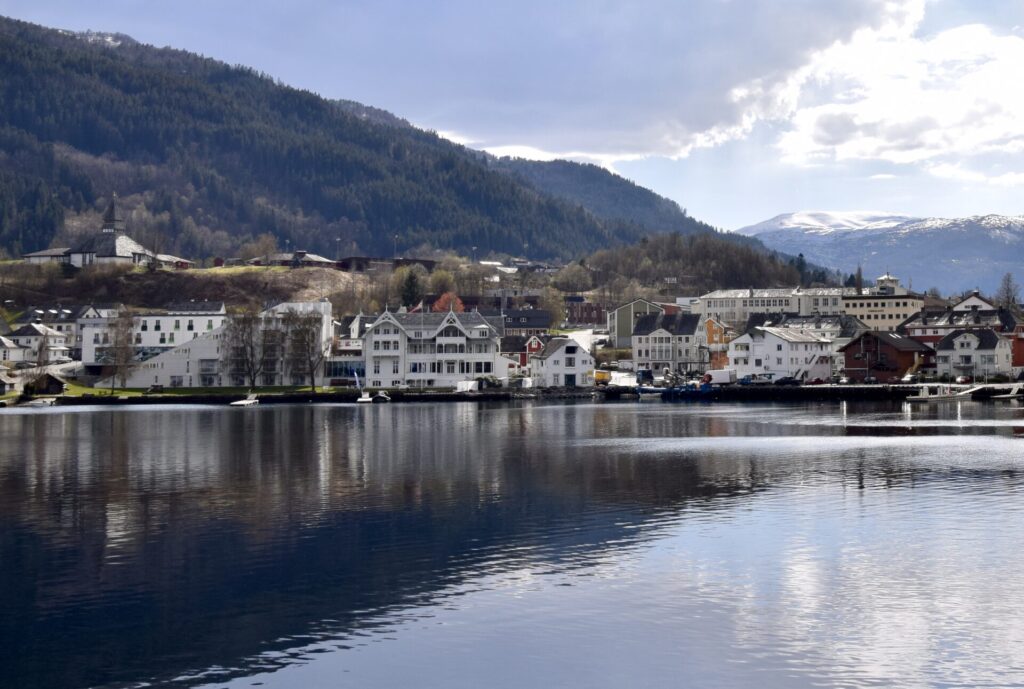
The town is a great base from which to explore the Hardanger region. I have stayed in Norheimsund several times to experience the fruit tree blossom in spring.
Norheimsund is also popular among summer tourists, someone comes by boat using the guest harbour at the attractive waterfront.
Steindalsfossen is among the main attractions. Another popular attraction is Hardanger Maritime Centre.
HARDANGER FARTØYSENTER – Hardanger Maritime Centre
Hardanger Maritime Centre is a national maritime centre and museum.
It represents one of the biggest centres on restoration of boats and vessels in the Nordic countries.
It was closed when I visited the centre in the end of April. Opennig time is medio May-August. Then you can see craftsmen working, and visit the workshops. There is a small boat workshop, a smithy, a ropewalk, and a slipway with bigger restoration projects. You can experience ropemaking, forging and wooden boat building. It is also possible to hire a traditional wooden rowing boat with life jackets and fishing gear.
SANDVEN HOTEL
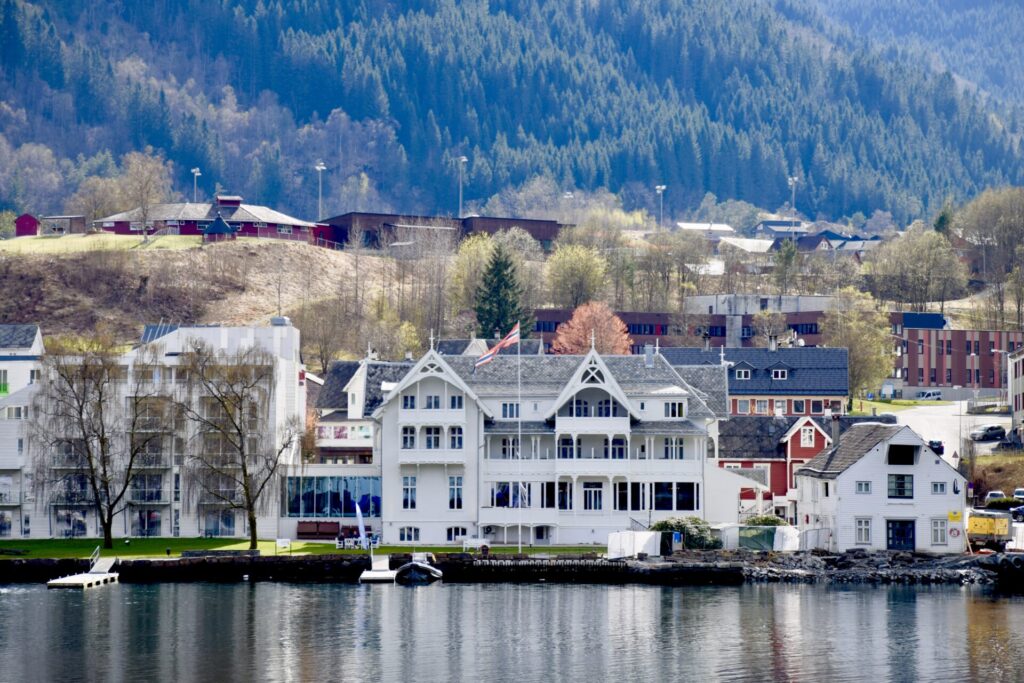
We had always preferred the old and venerable Hotel Sandven when staying in Norheimsund. The hotel itself is an attraction; it is the only remaining monumental Swiss chalet hotel in Hardanger!
Hotel Sandven was built in 1857. The first hotel was significantly rebuilt and expanded in 1896–97 with steep roofs and pointed gables.
The hotel was also expanded in 1924 and 1960 and restored in the 1990s. In 2011, Sandven Hotell became part of Thon Hotels.

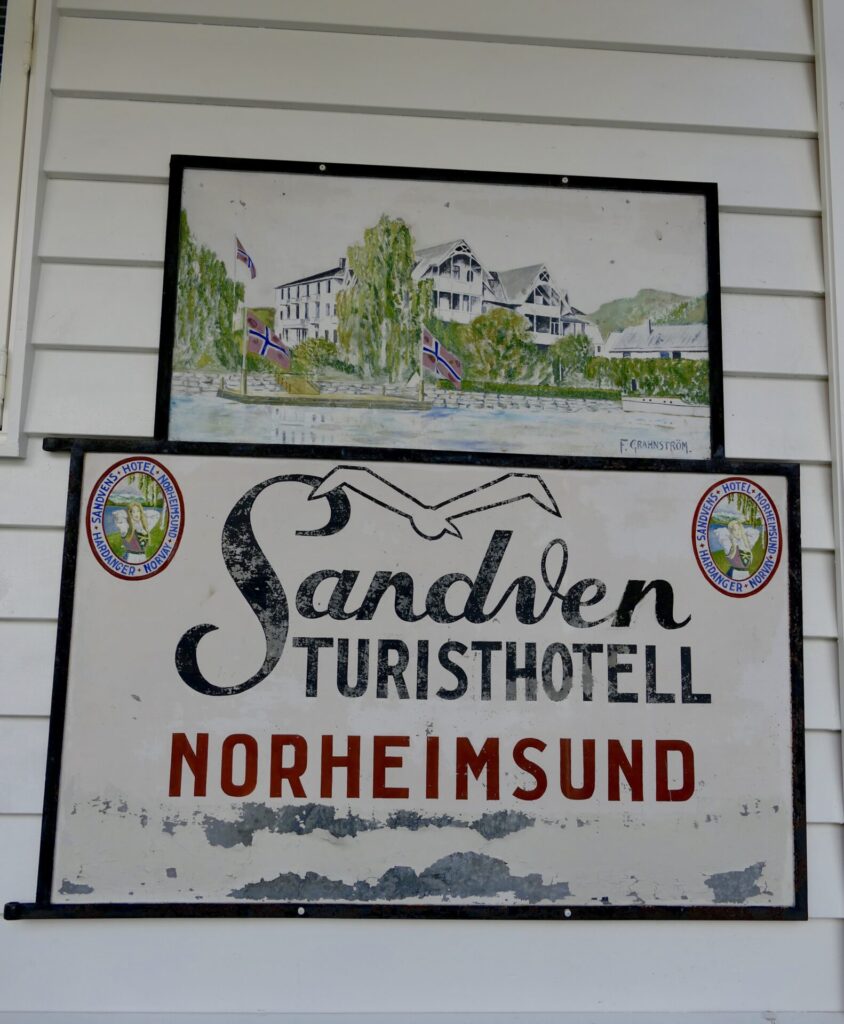
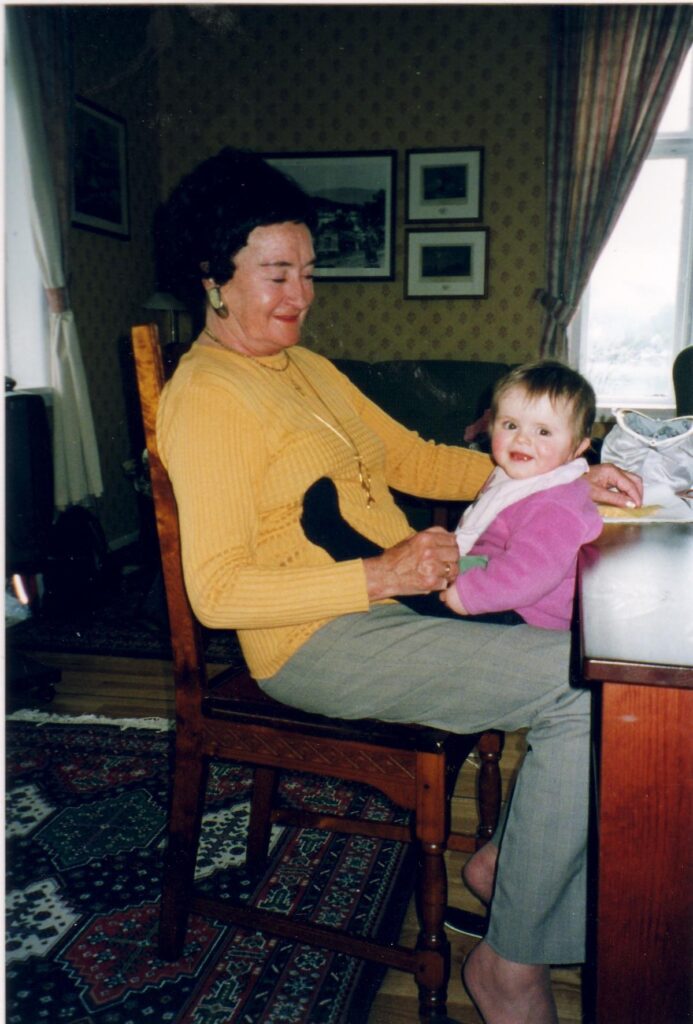
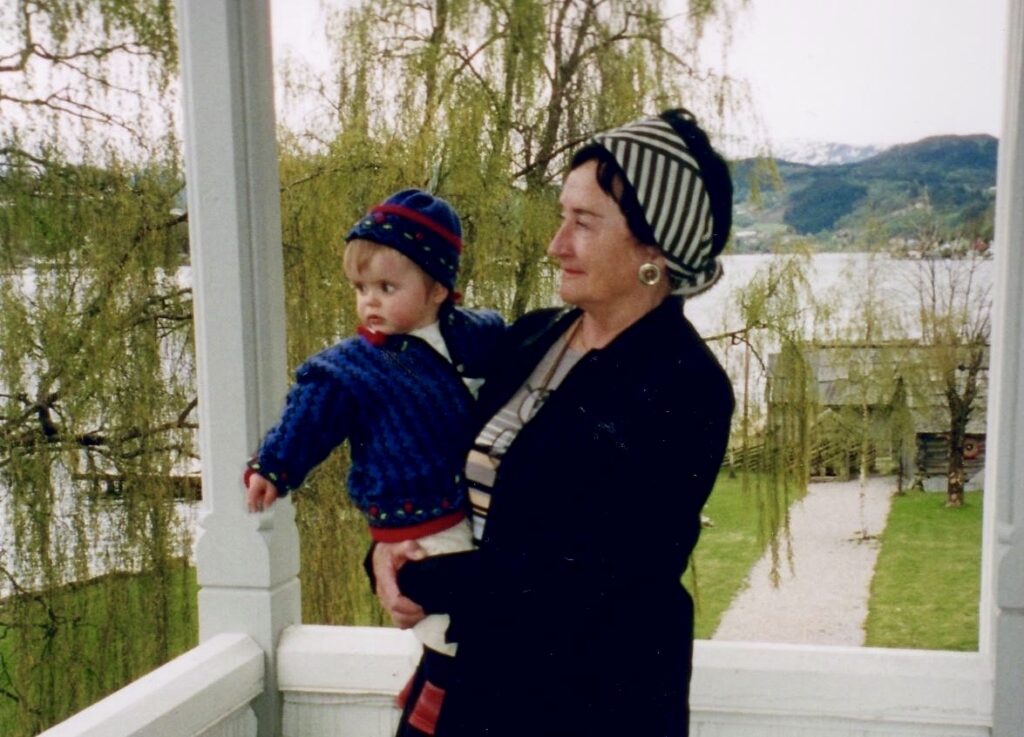
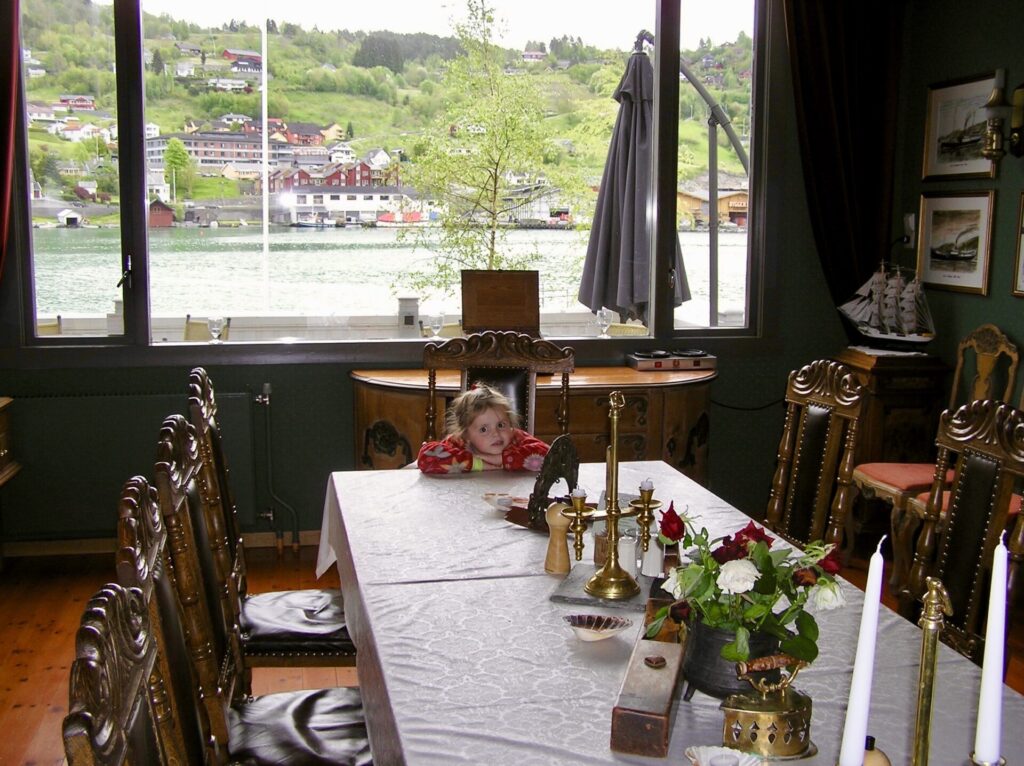
We stayed in the years of 2002, 2003 and 2006 among others. It was then privately owned. If there were few guests I remember we had both breakfast and dinner in a smaller beautiful dining room (picture) with a great atmosphere.
After becoming a part of the Thon hotels it has got a new building in connection with the old part. In earlier years I have stayed in the old part, but this year I had a room in the new part. The room was modern and beautiful decorated and very comfortable beds.
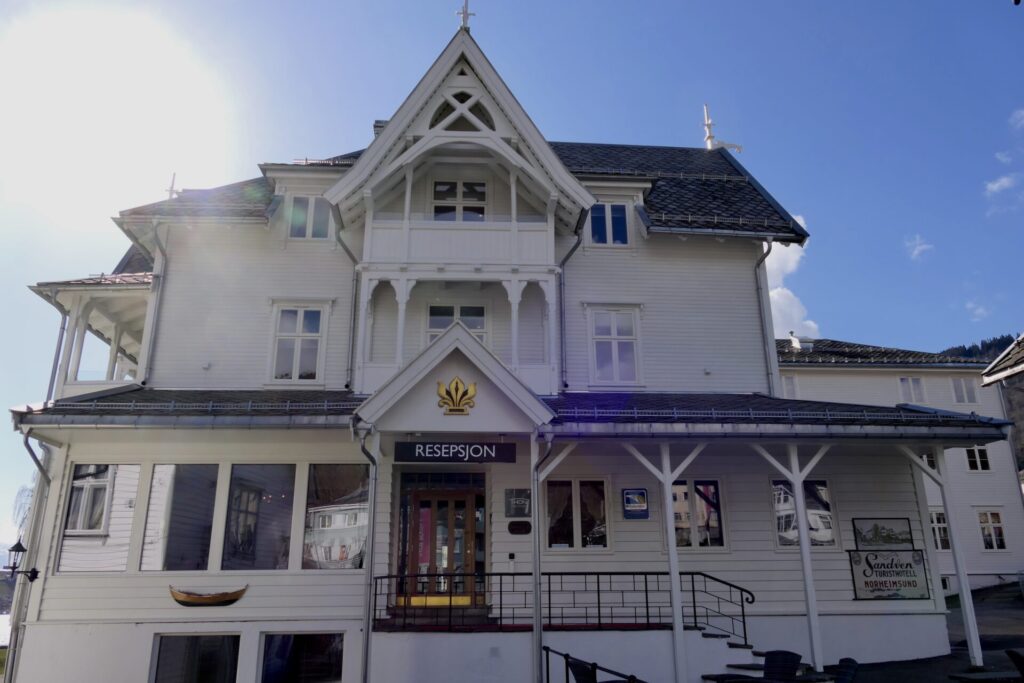
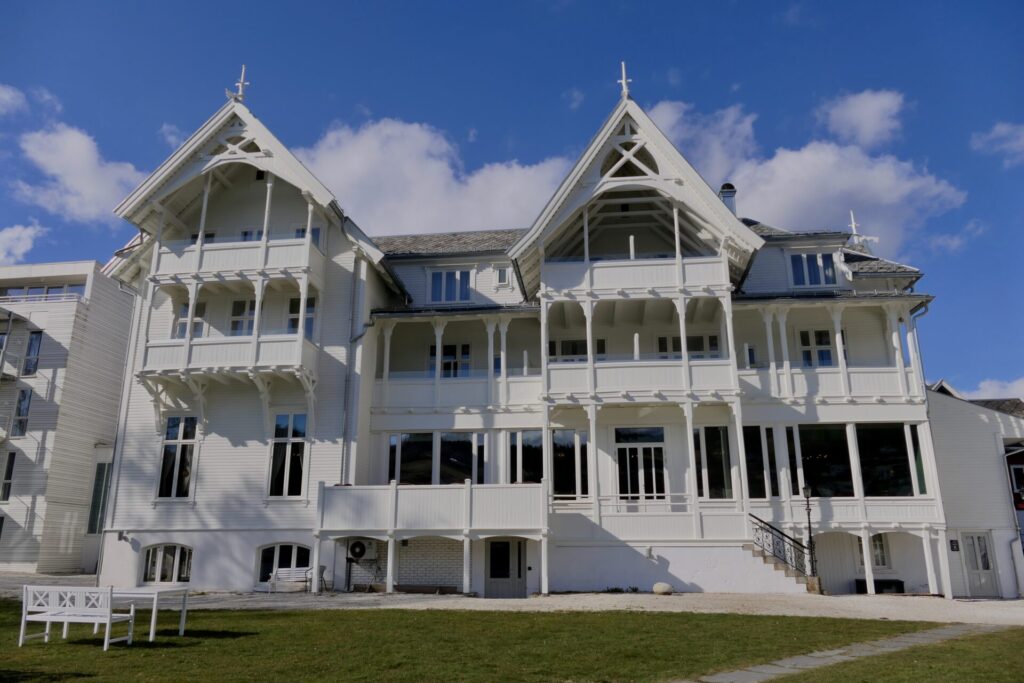
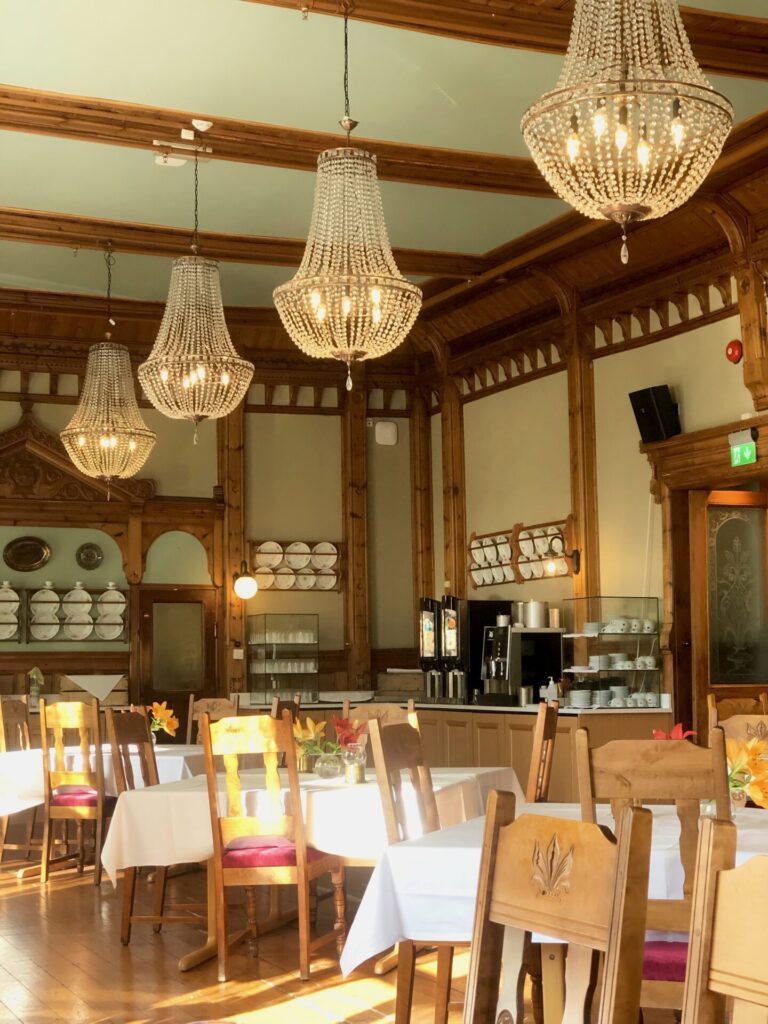
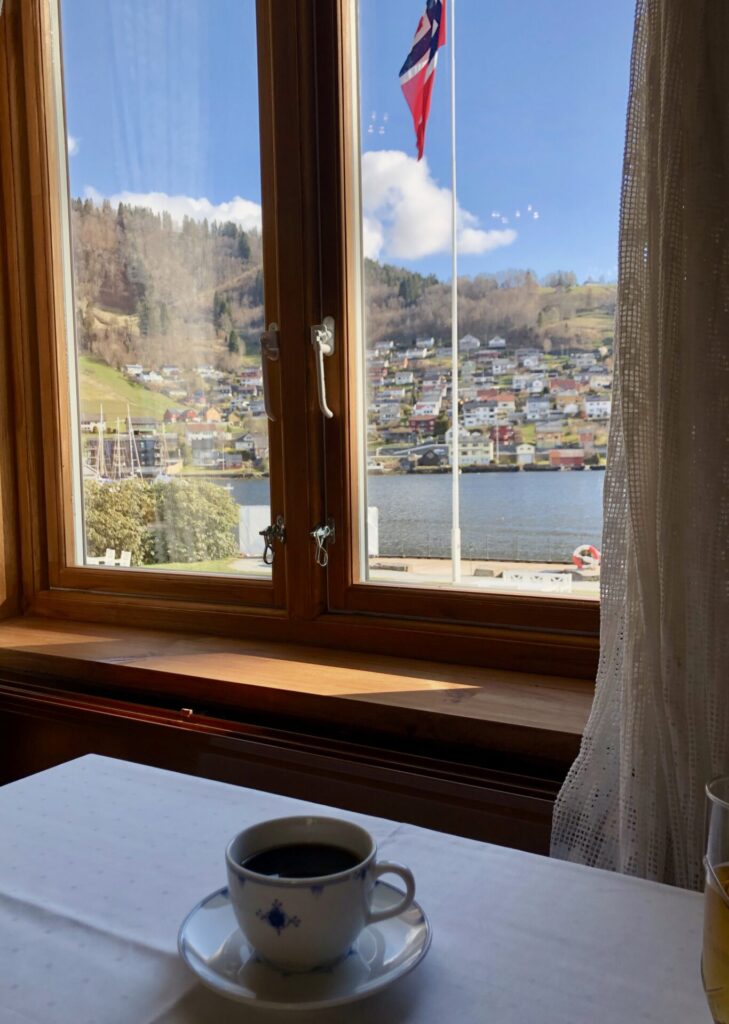
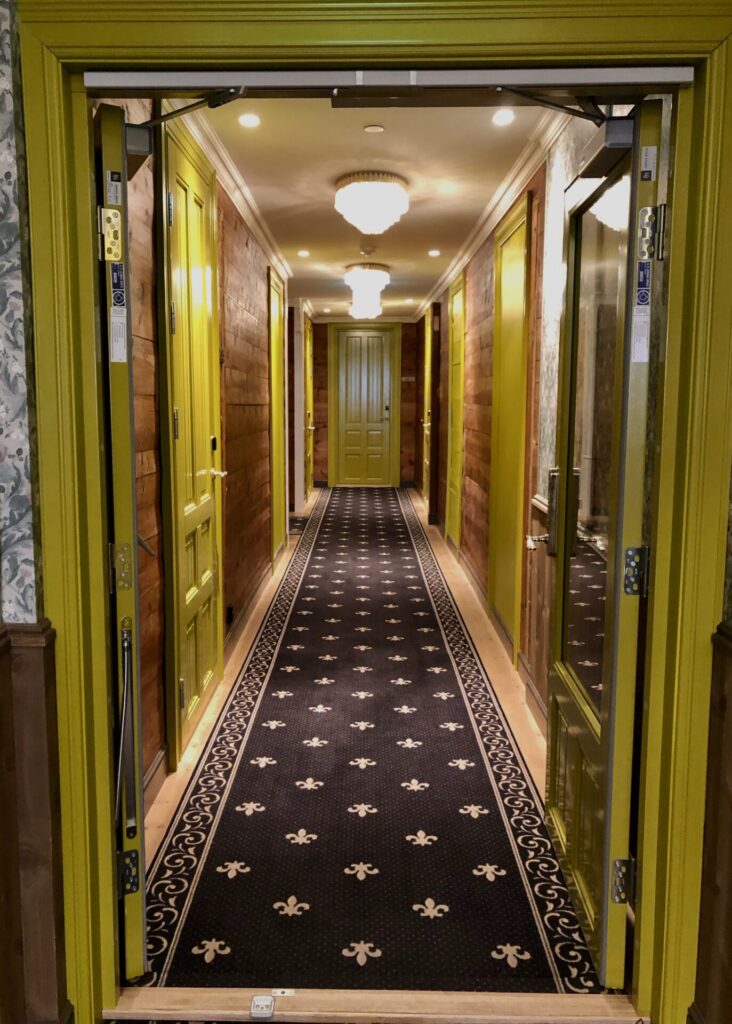
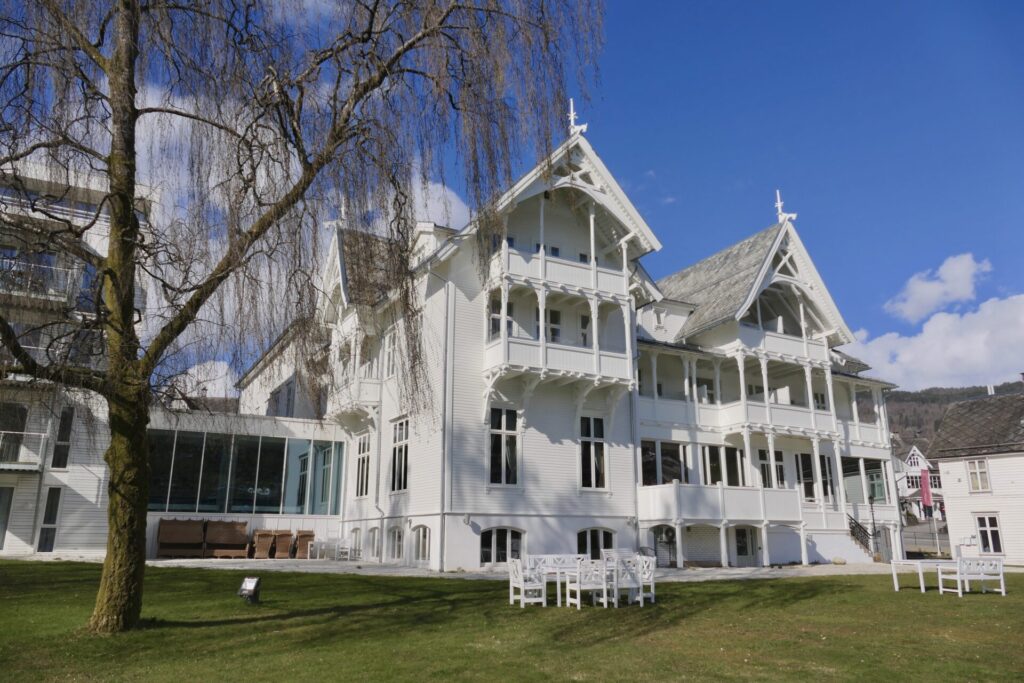
VIKØY
The village is located 3 kilometres (1.9 mi) south of Norheimsund.
Vikøy Church – was built in 1863 at the site where the old Vikøy Stave Church stood for several centuries until it was torn down.


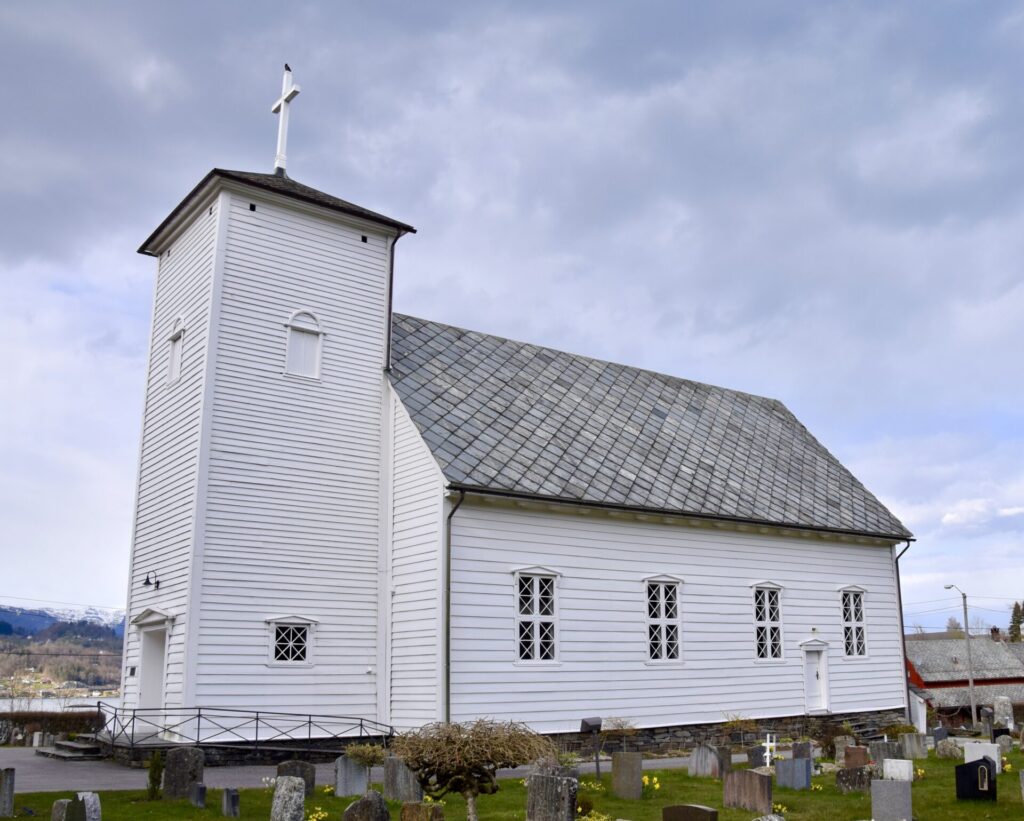
The old vicarage at Vikøy is now a museum, owned by Kvam municipality and run by Hardanger and Voss Museum.
One of the buildings is called “Borgstova” which is a smokehouse from 1815. Borgstova is also known as Tidemandstova, because the famous Norwegian painter Adolph Tidemand lived here on several occasions. This was where he found inspiration for many of his renowned works, such as Haugianerne. The smoking room interior dates back to the mid 1800s.
The museum is open on Wednesdays in the Summer.
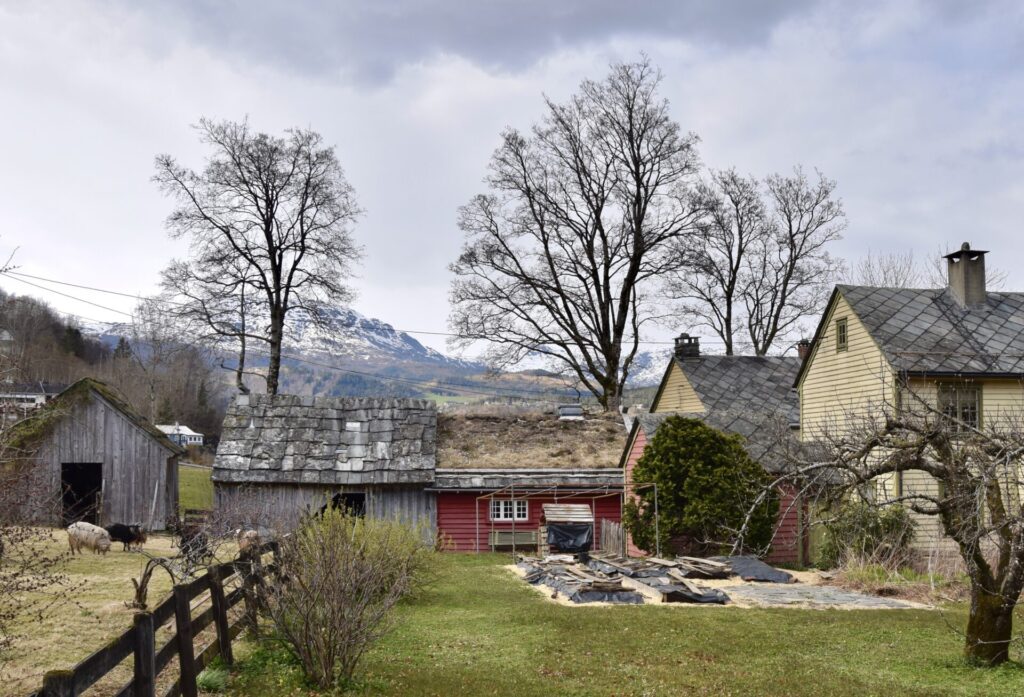
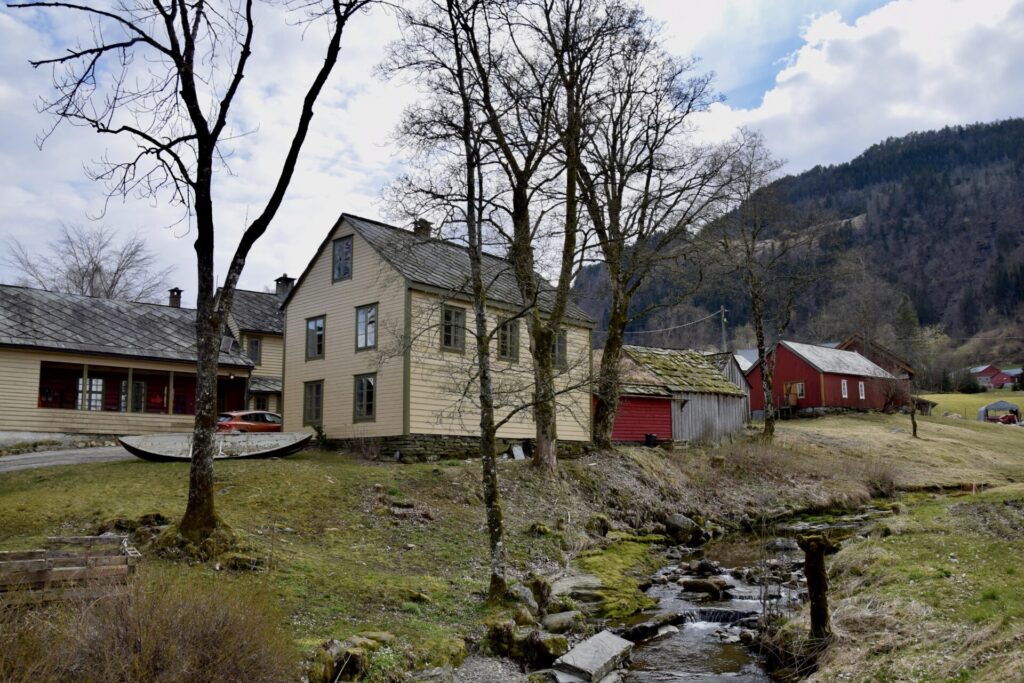
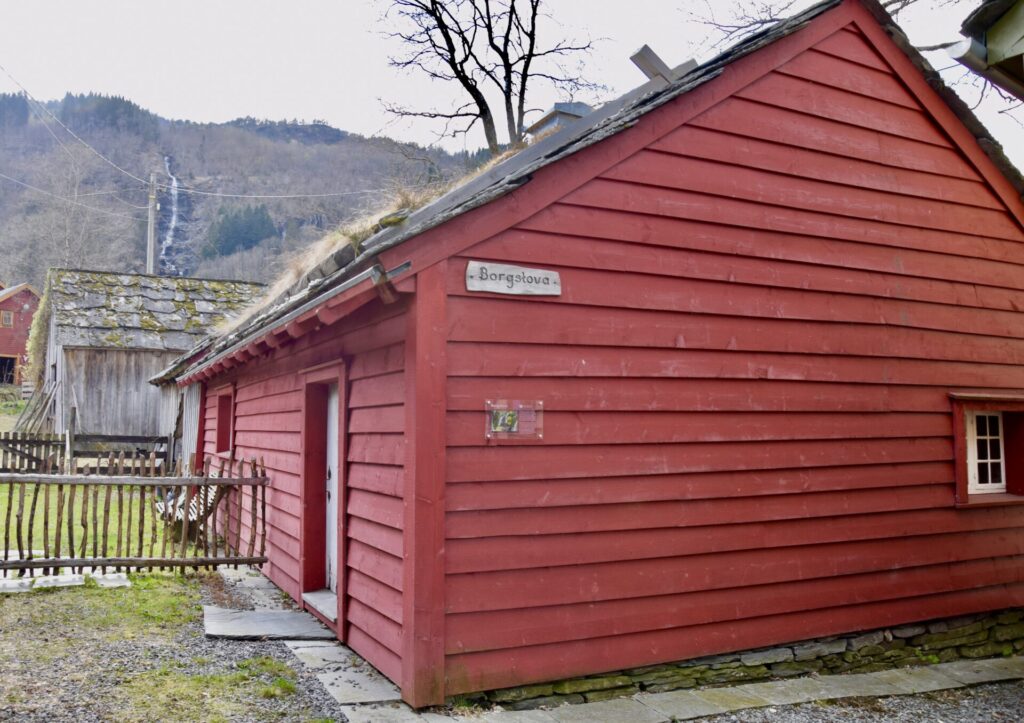
A row of old boathouses at Vikøy:
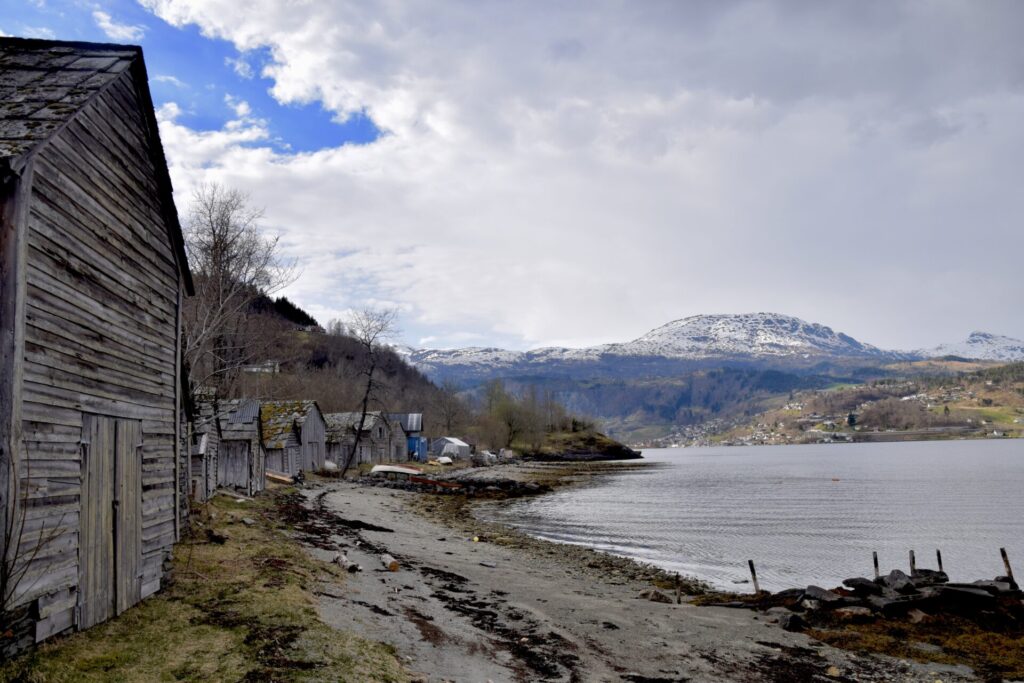
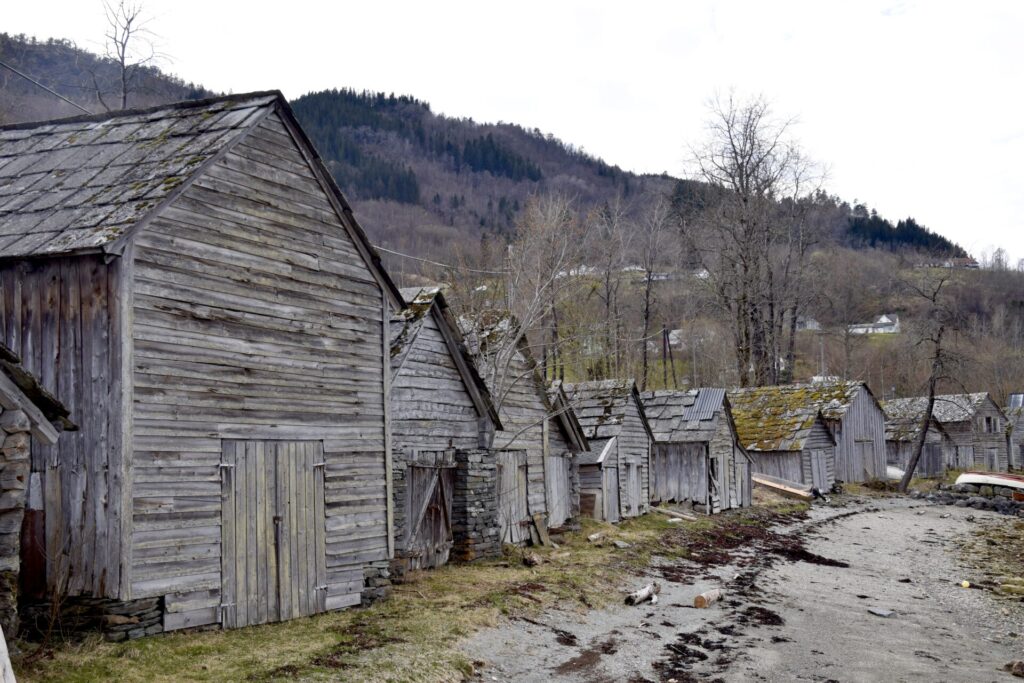
TØRVIKBYGD
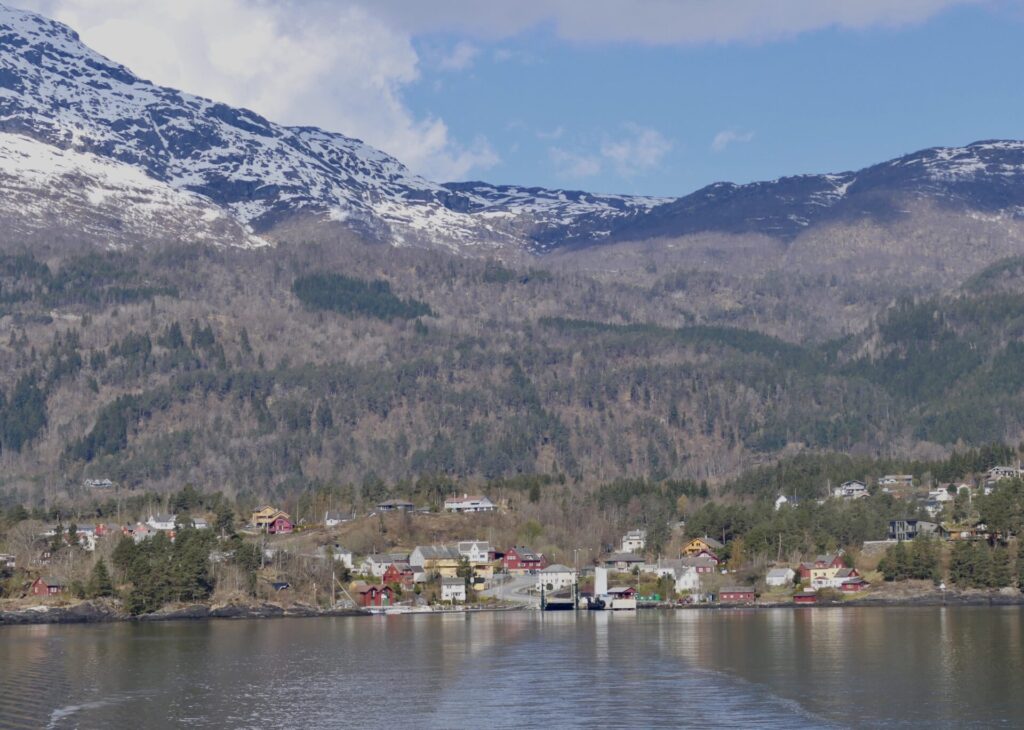
Tørvikbygd is located on the west side of Hardangerfjorden, around 13 km south of Norheimsund. The village is associated by ferry connection with the road Rv 550, on the east side of the Hardangerfjord to Jondal.
I went by ferry to Jondal and joined the third section of the Hardanger Scenic Route, Jondal -Utne.
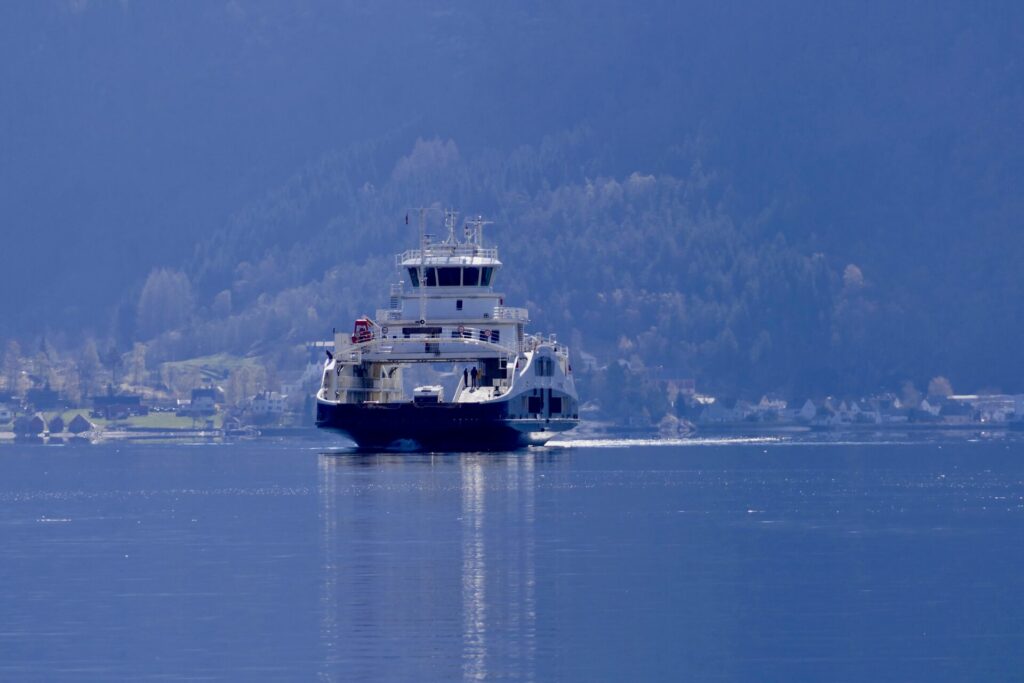
Follow me to Hardanger Scenic Route, part 3, the stretch from Jondal to Utne:

